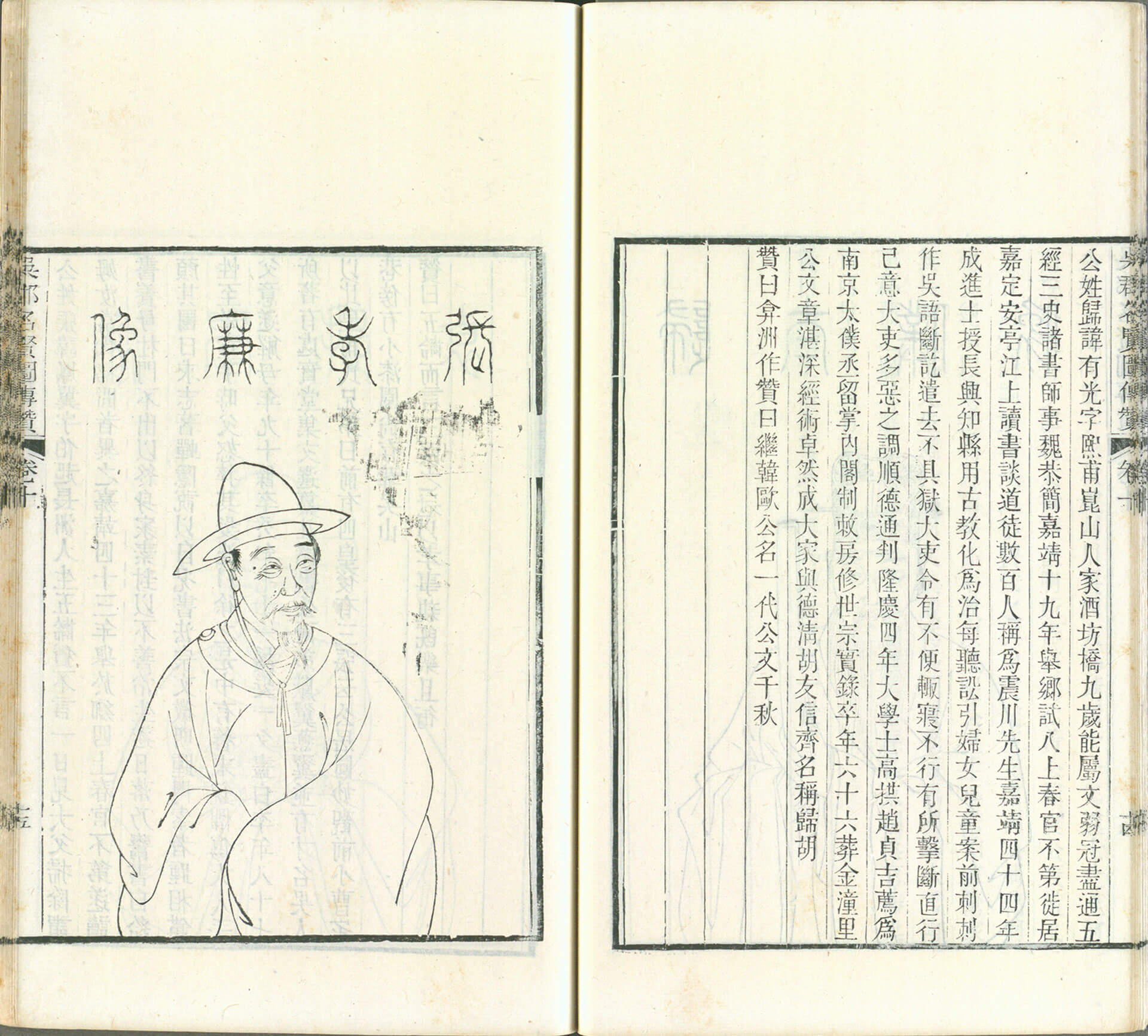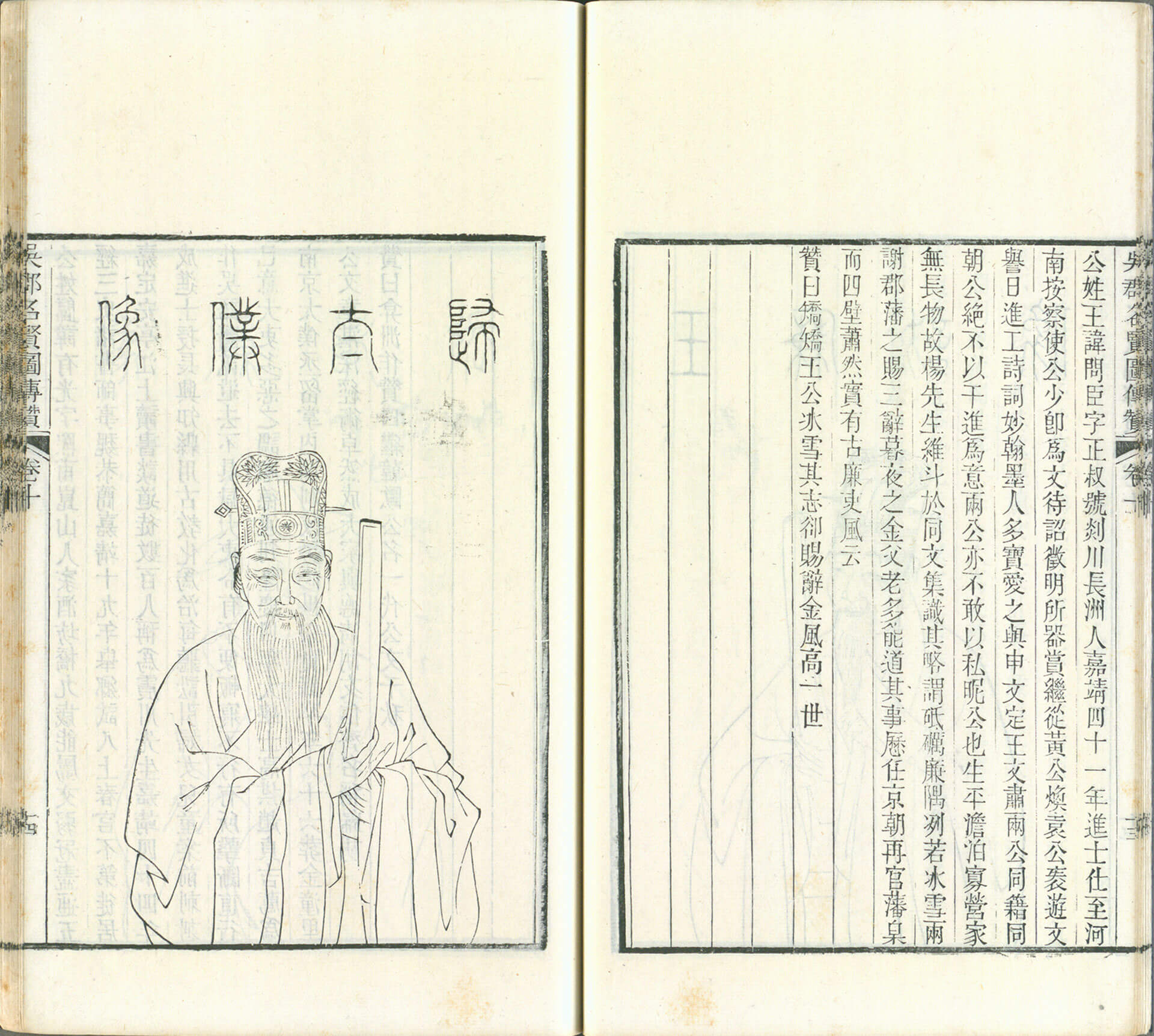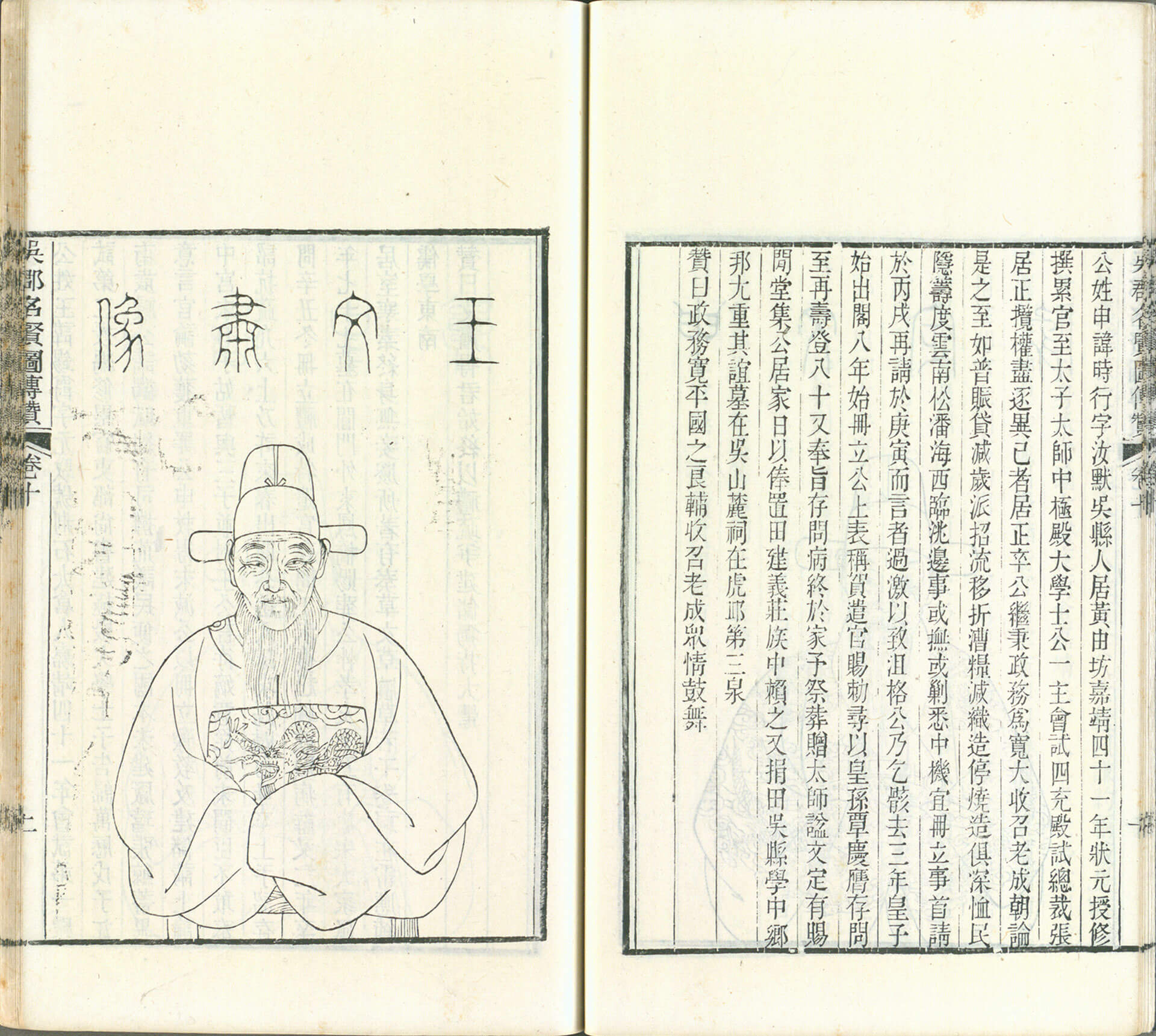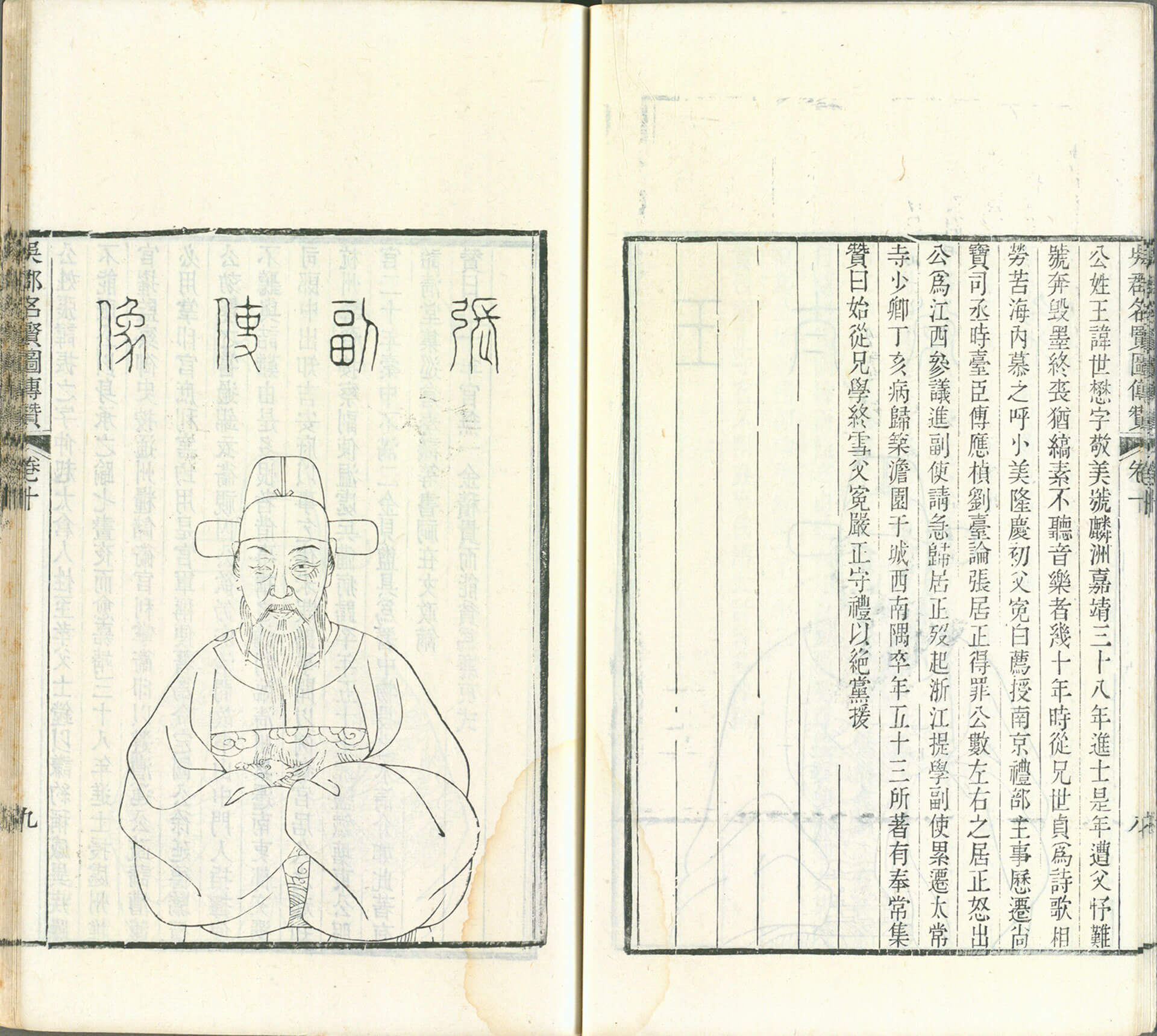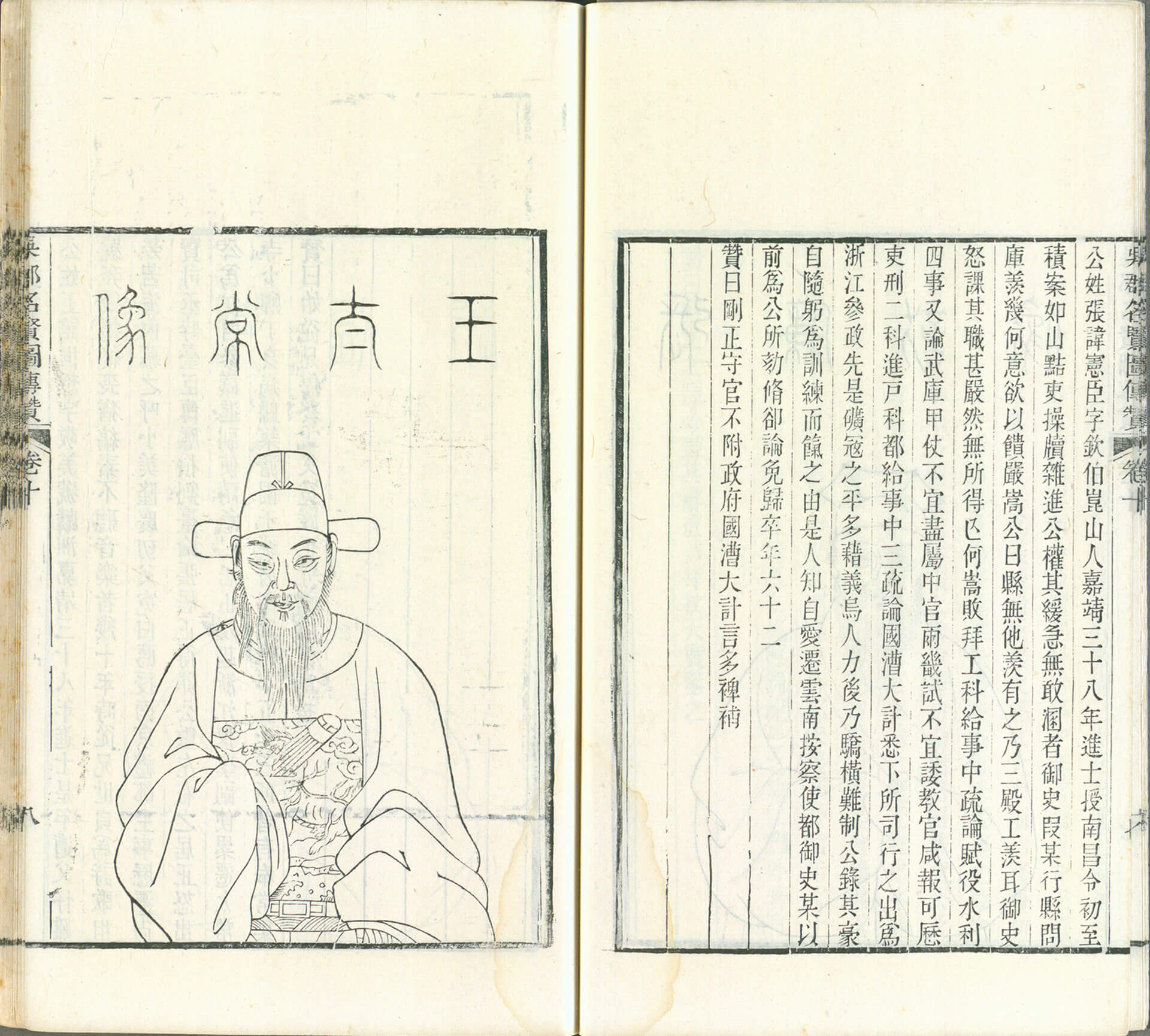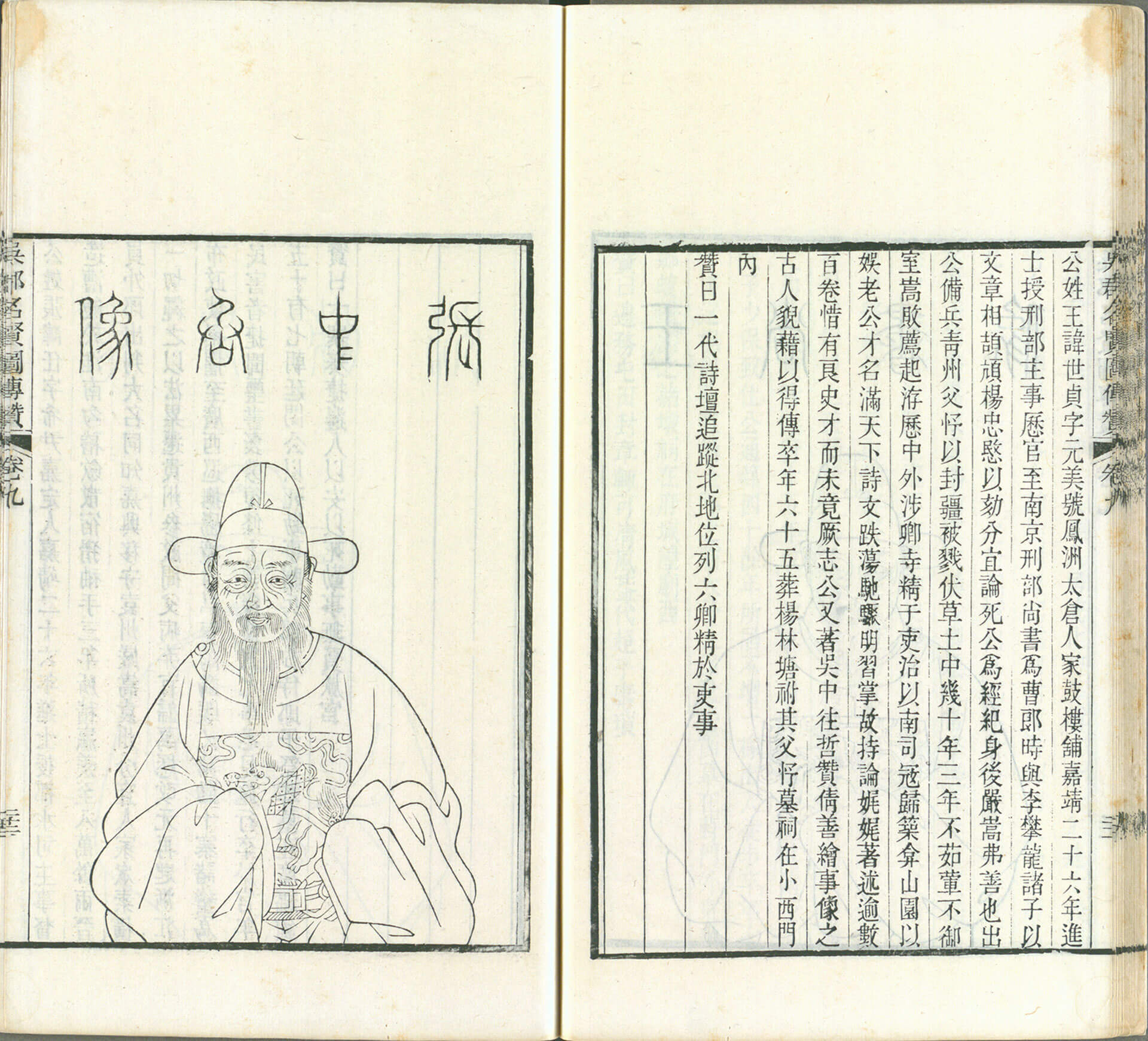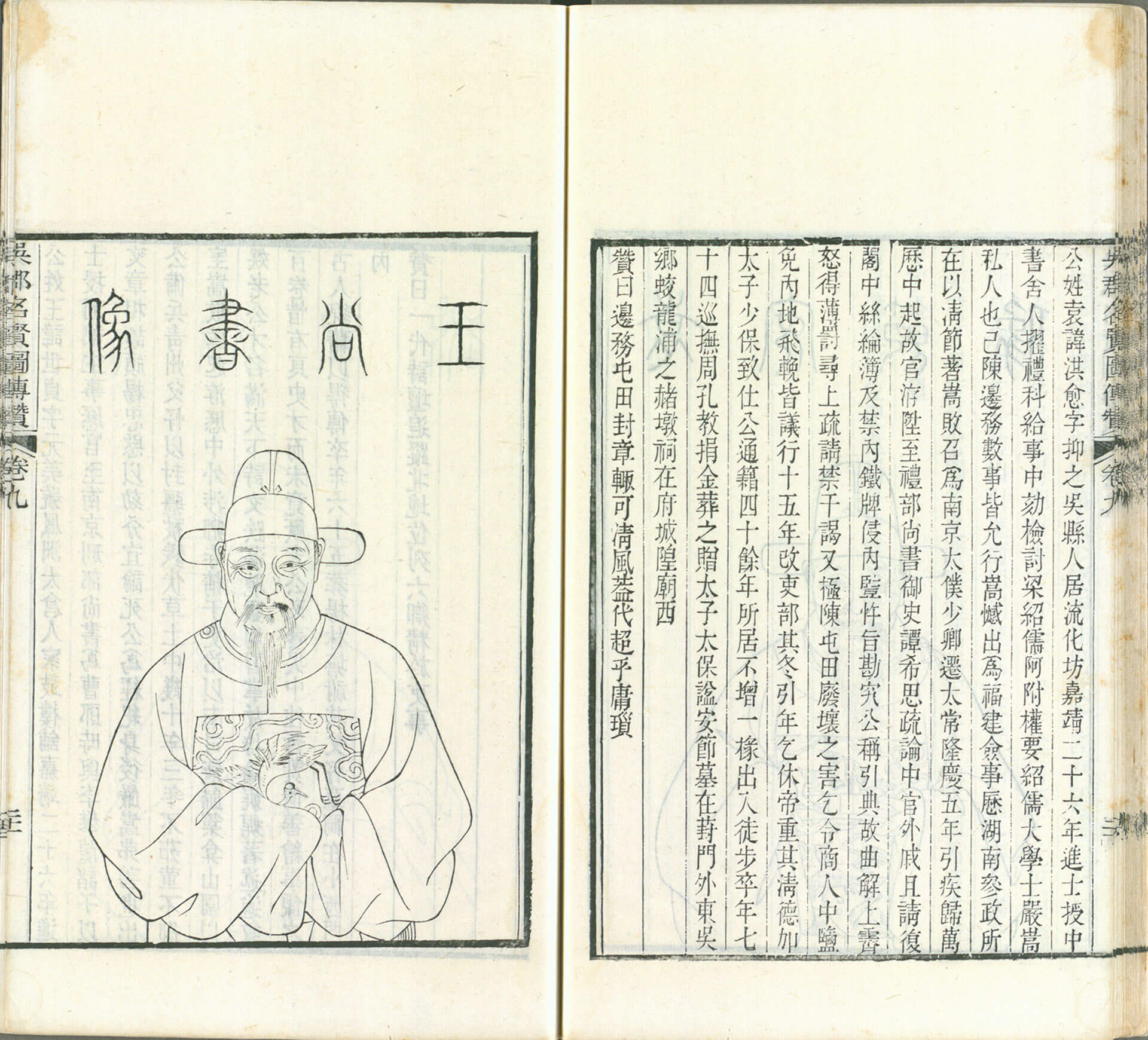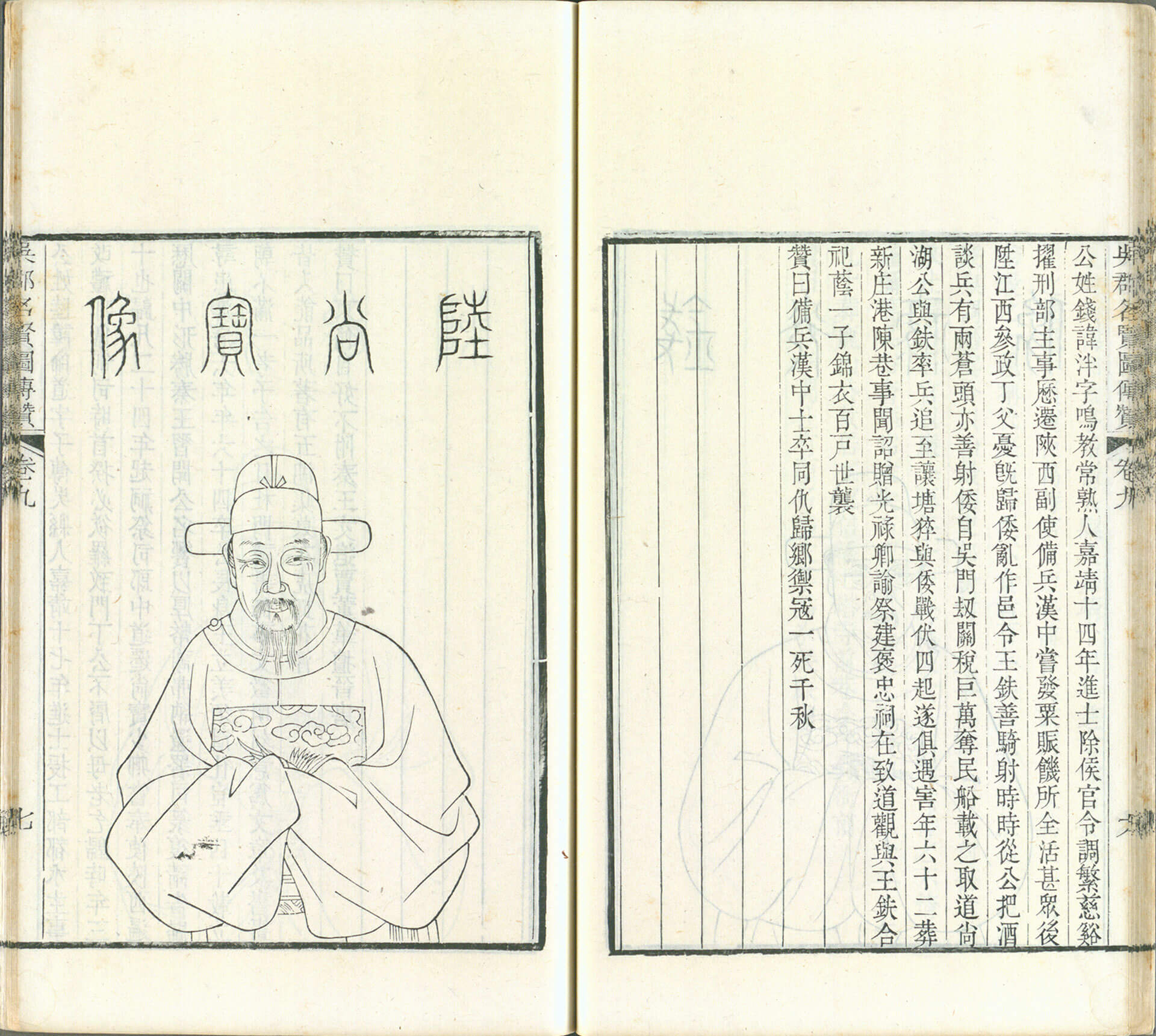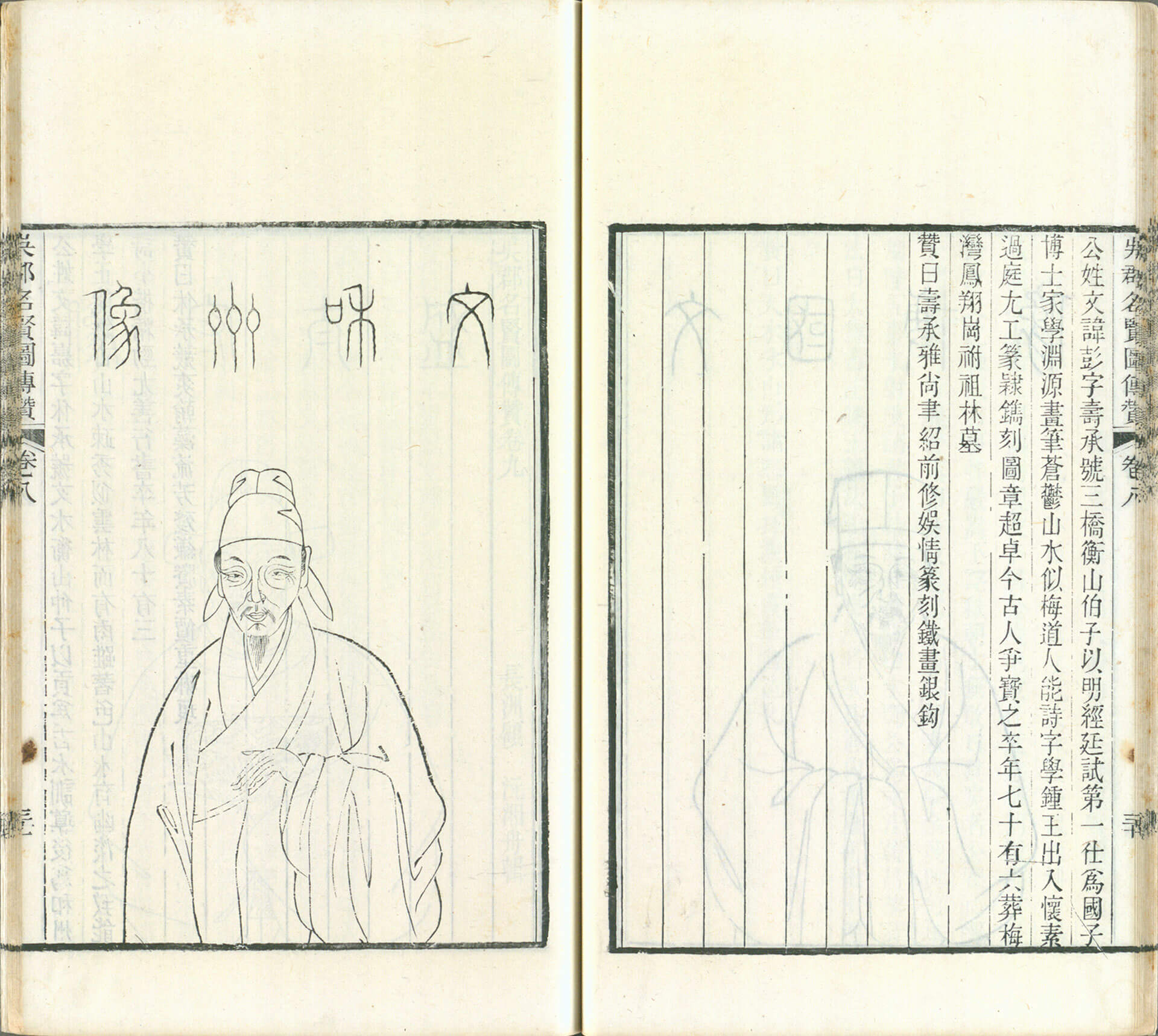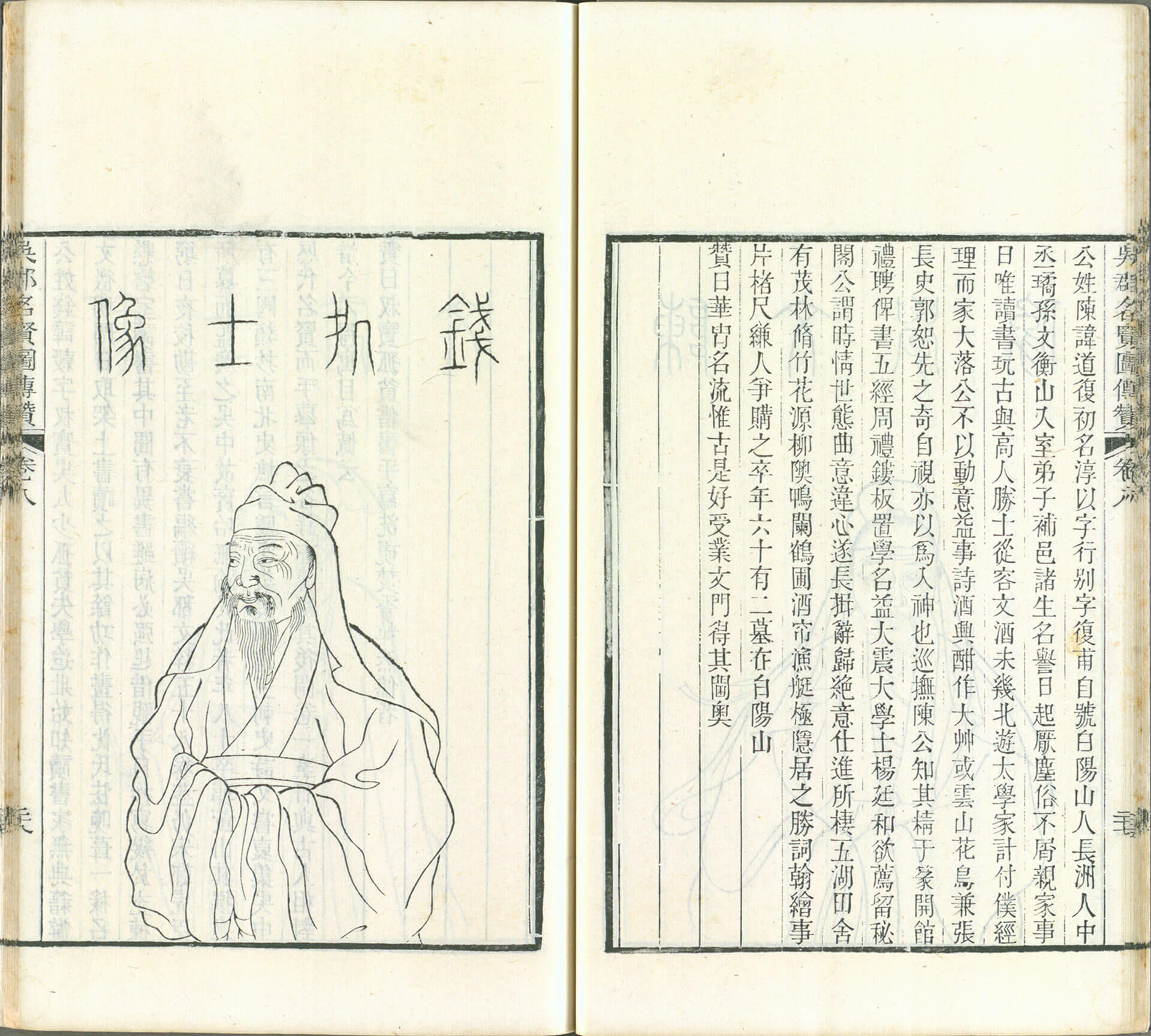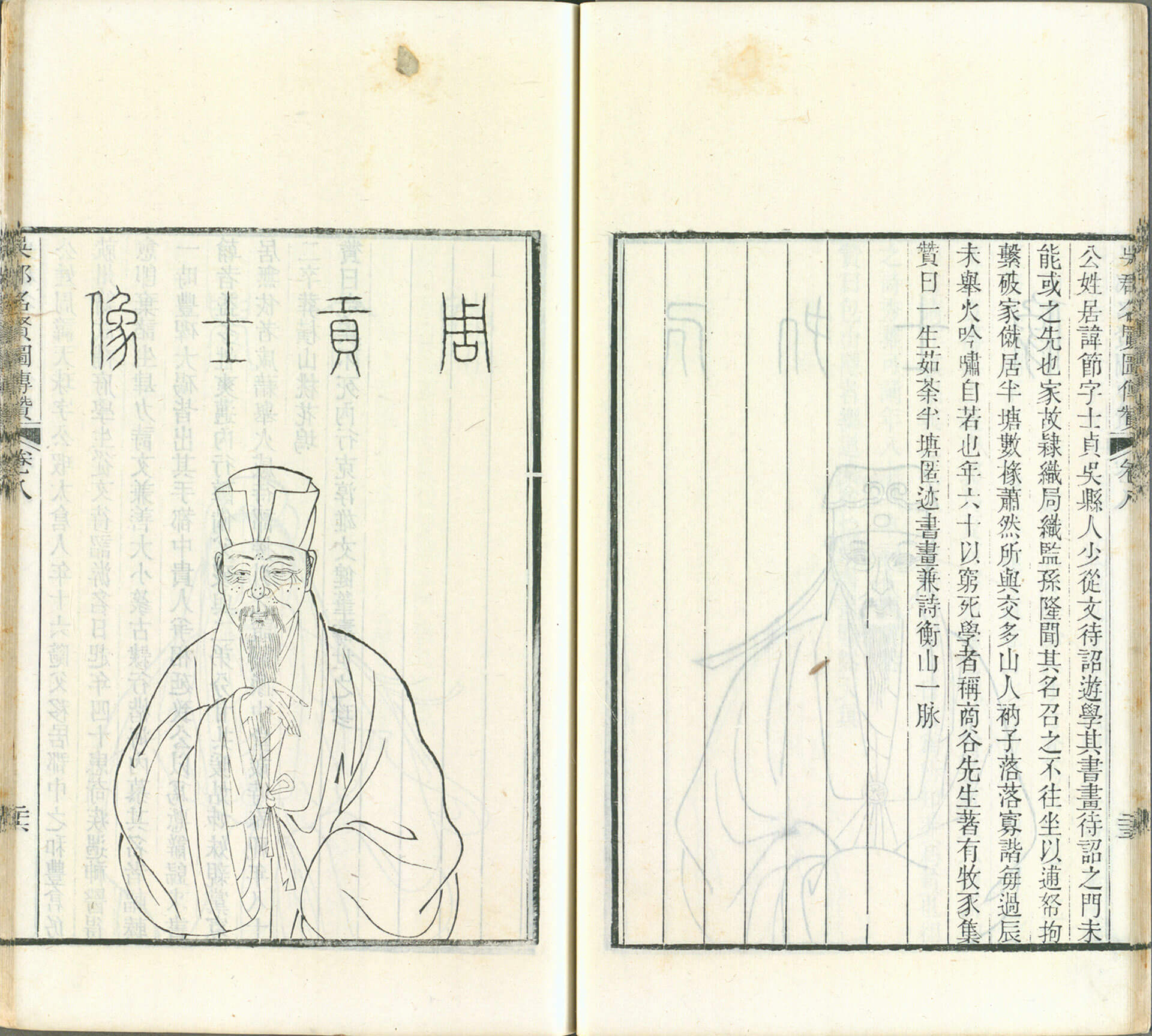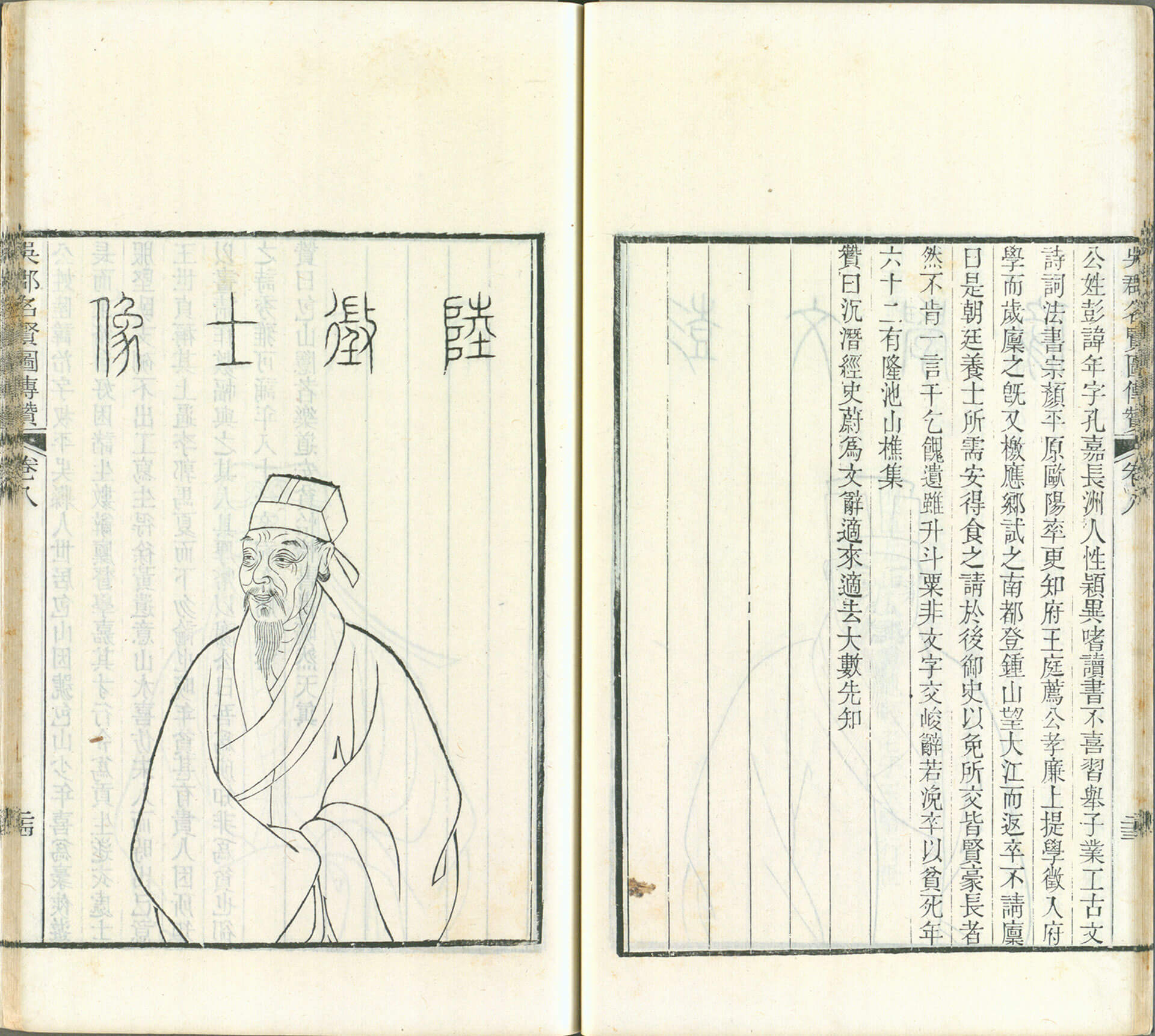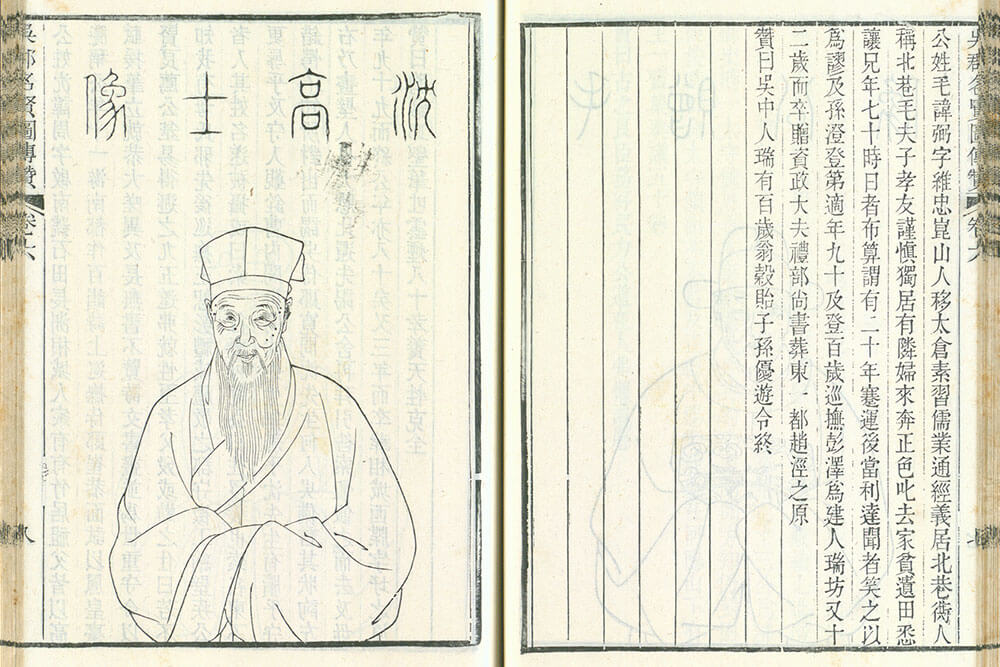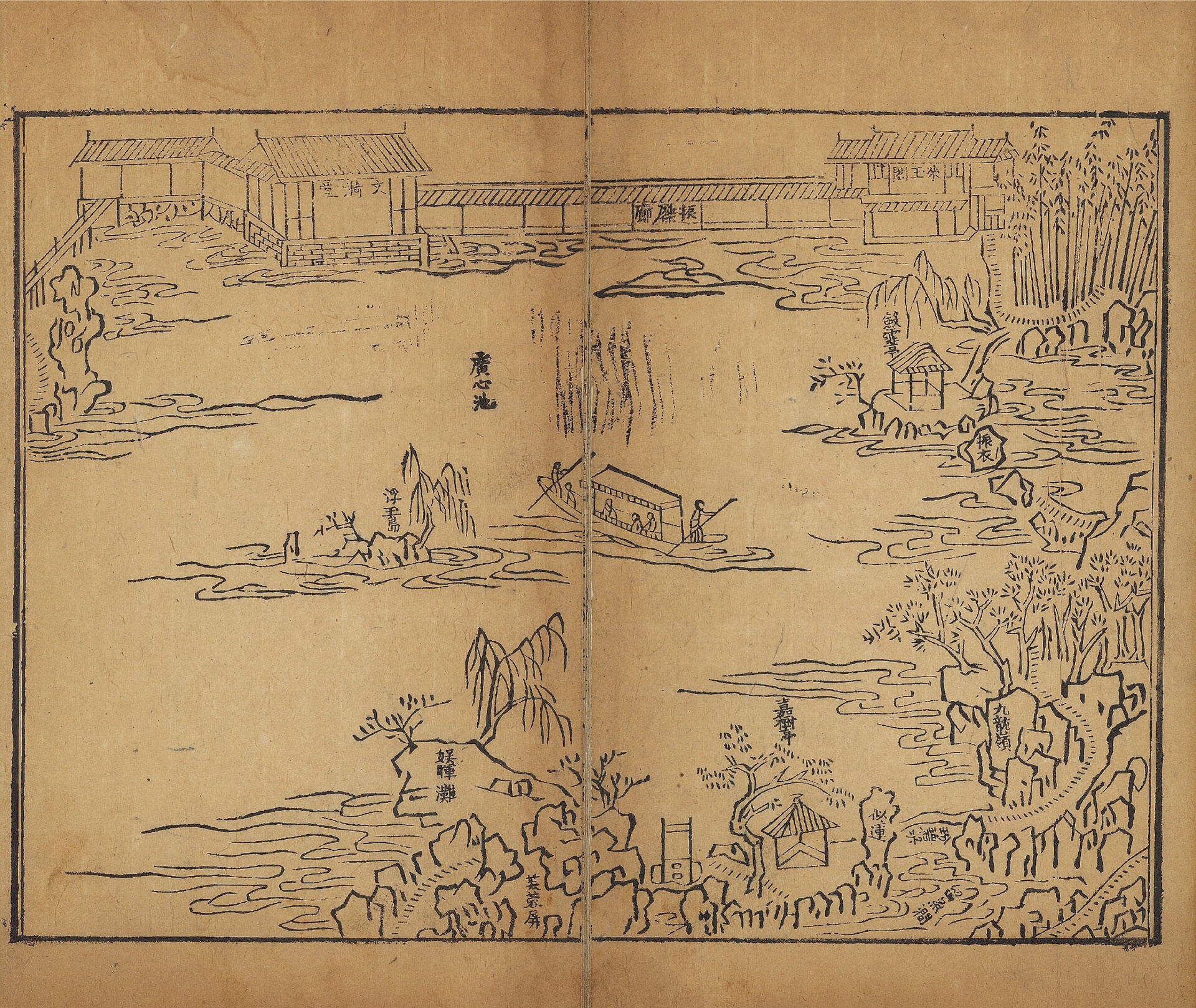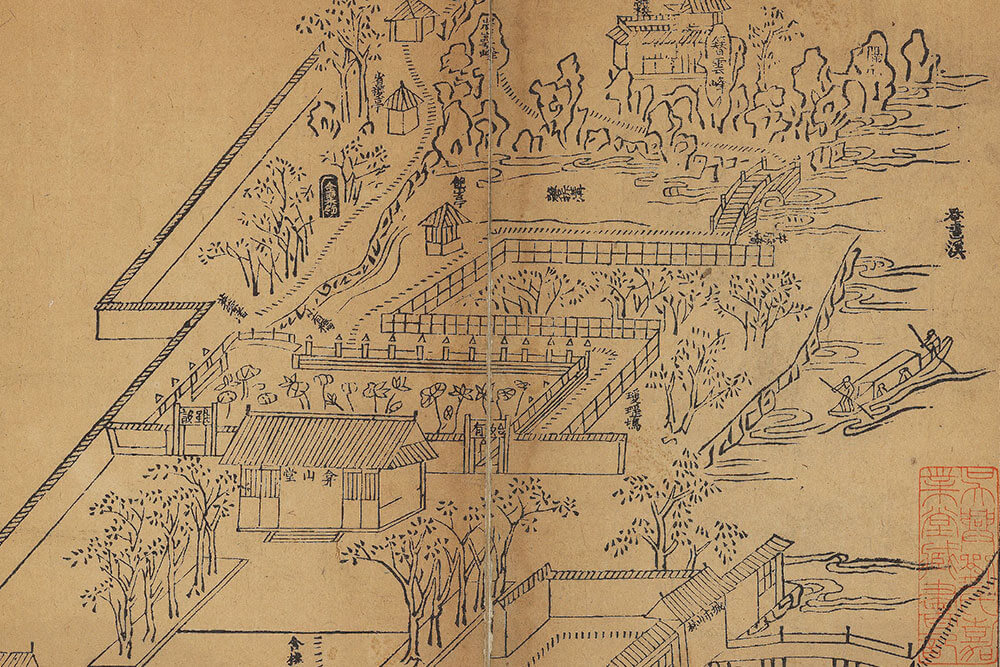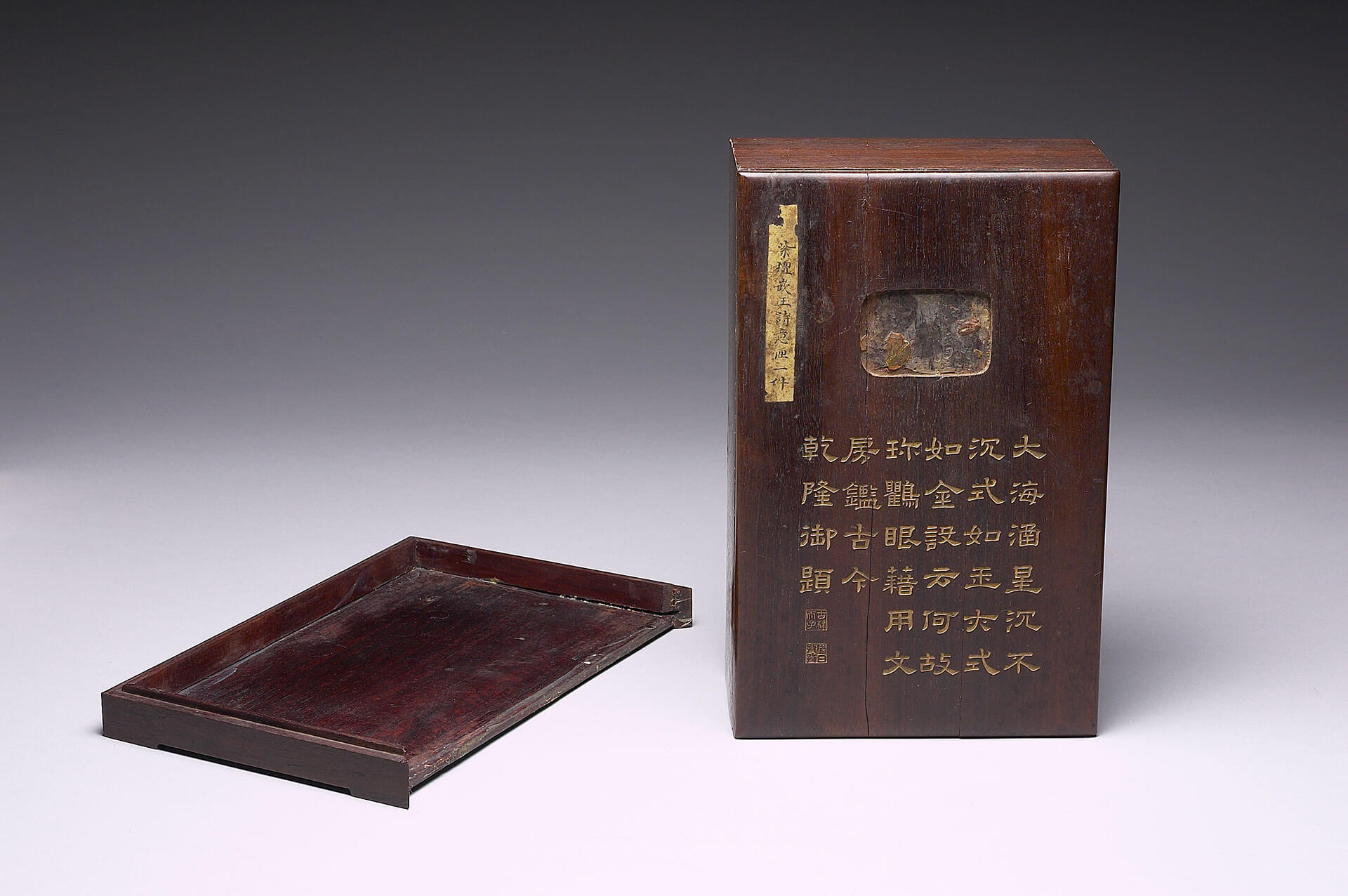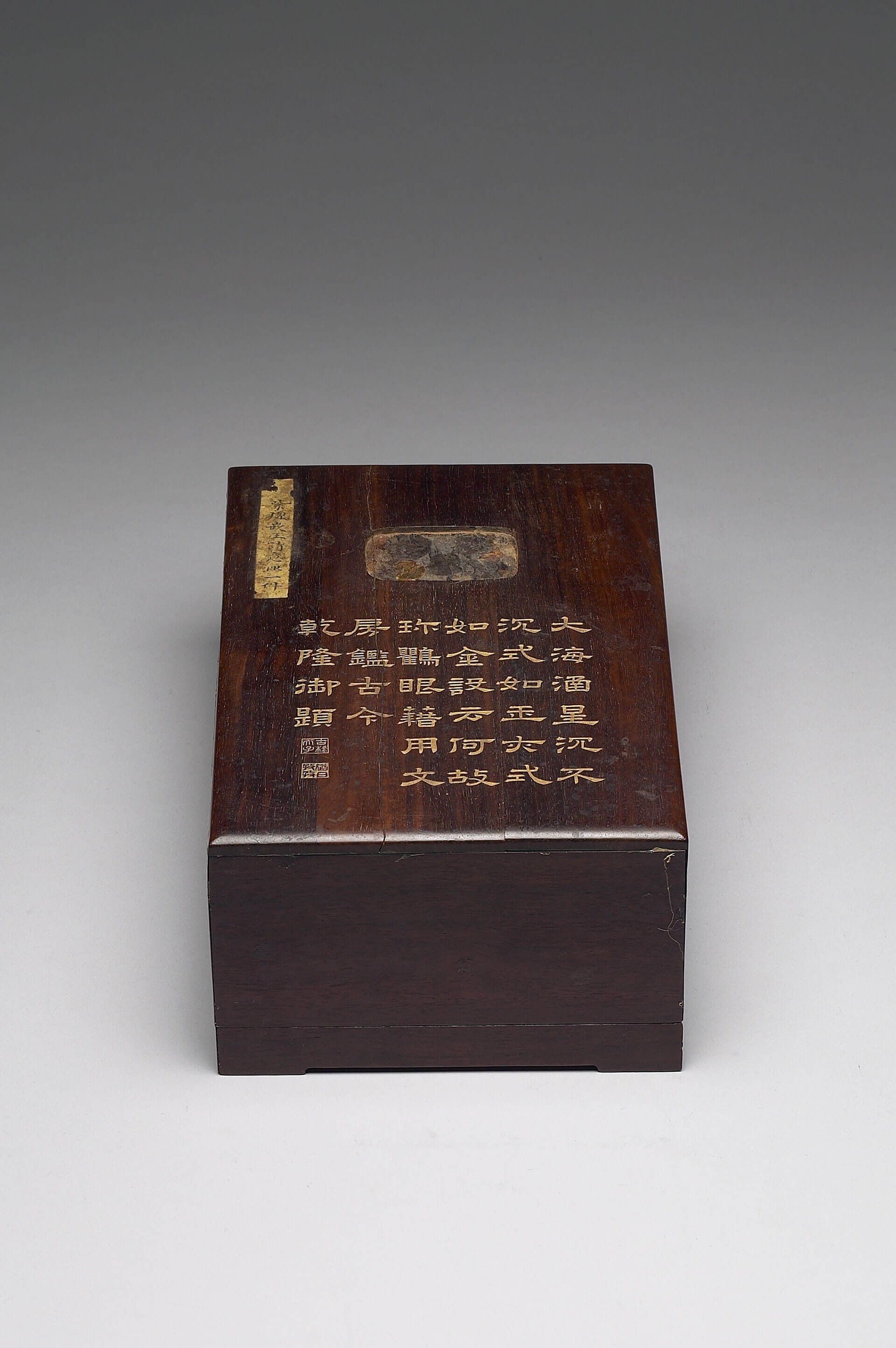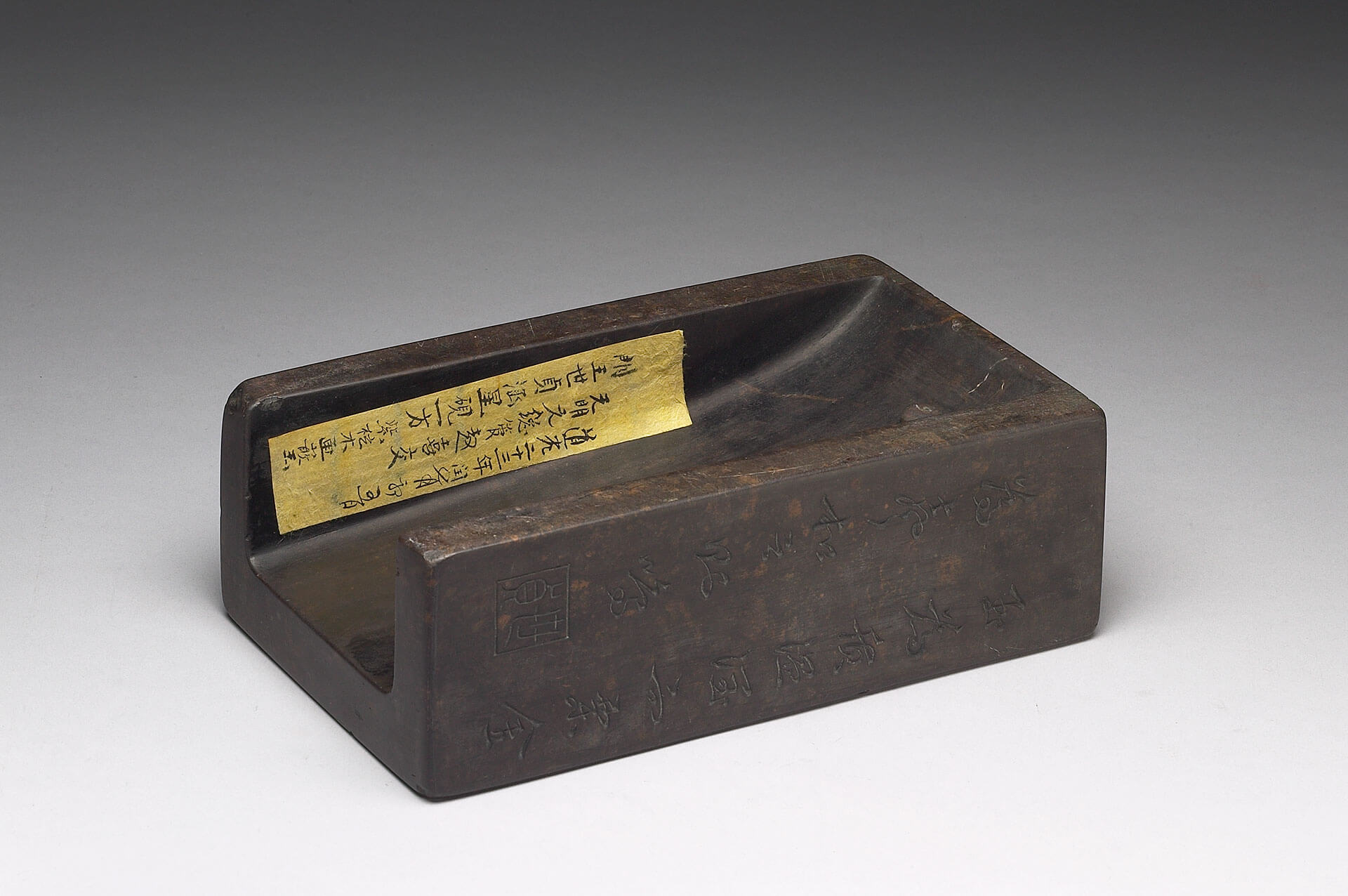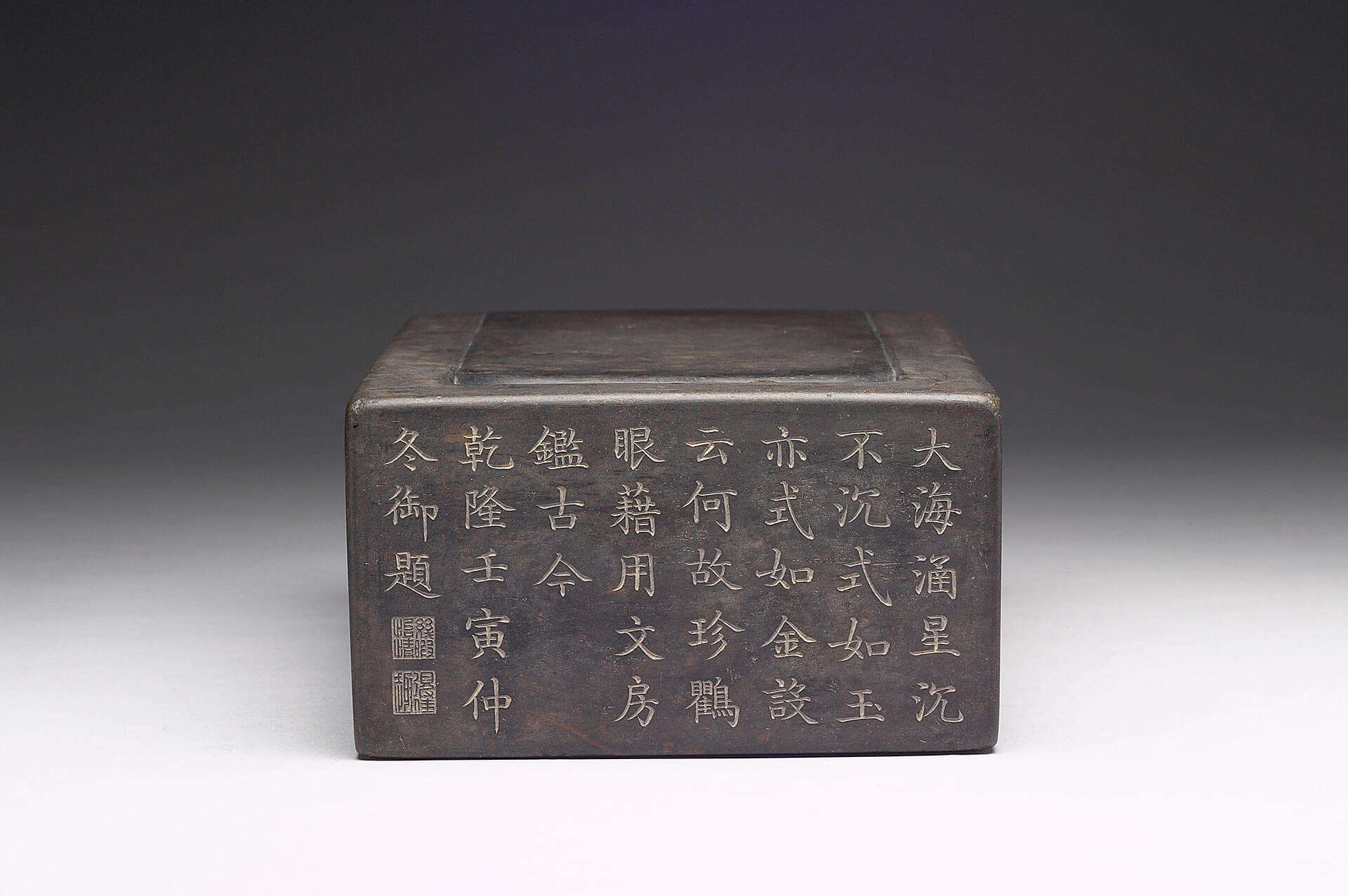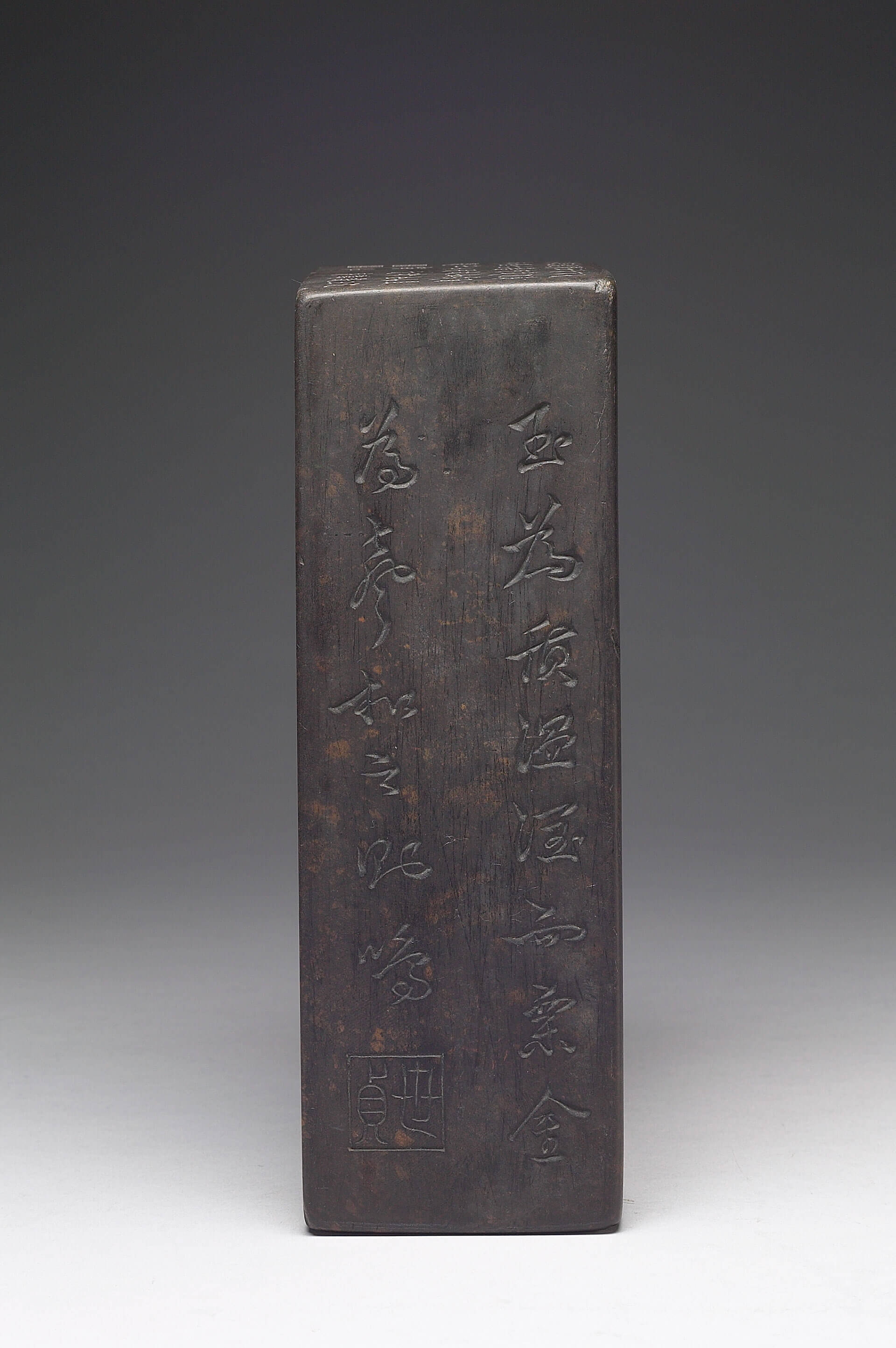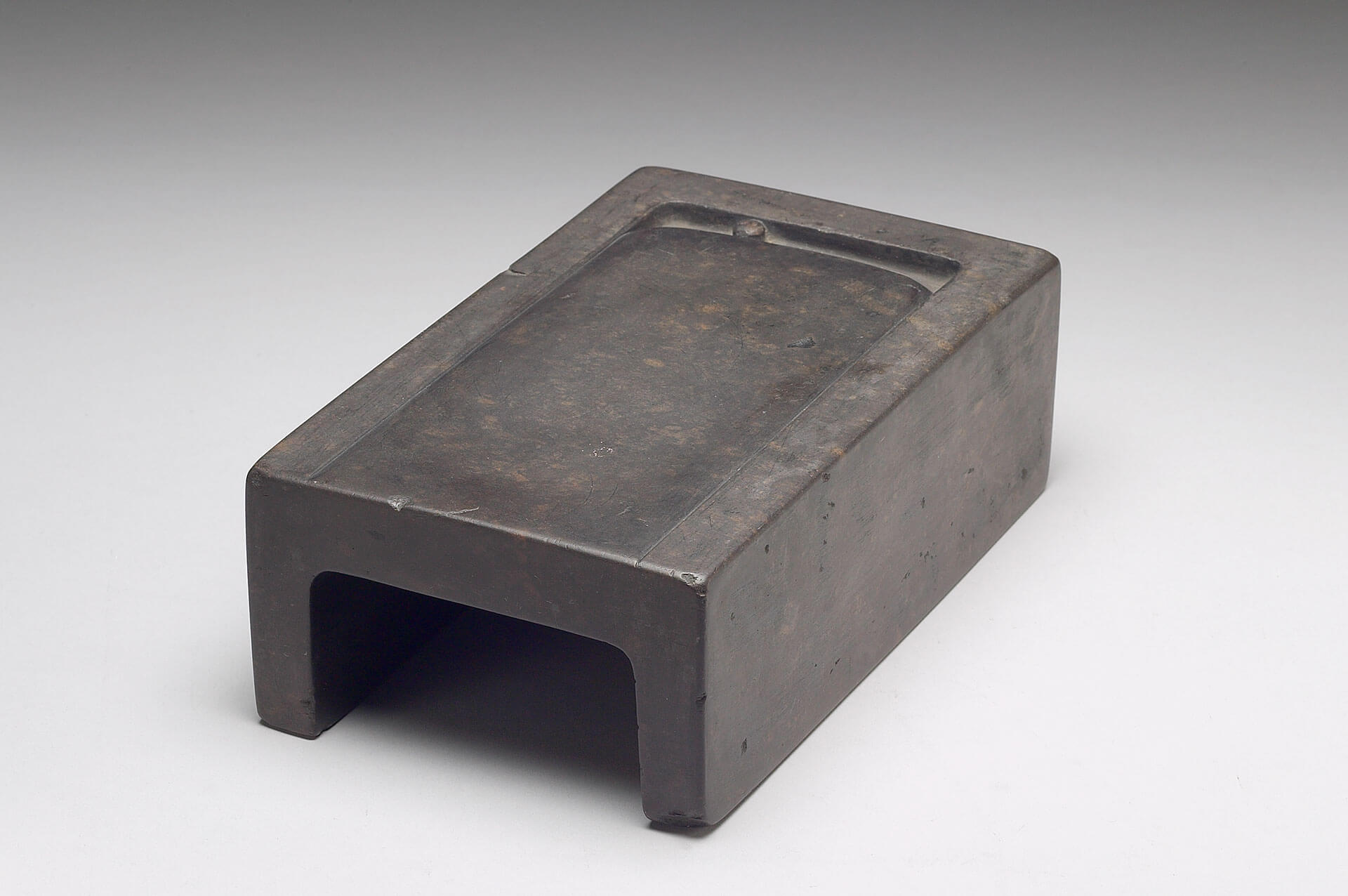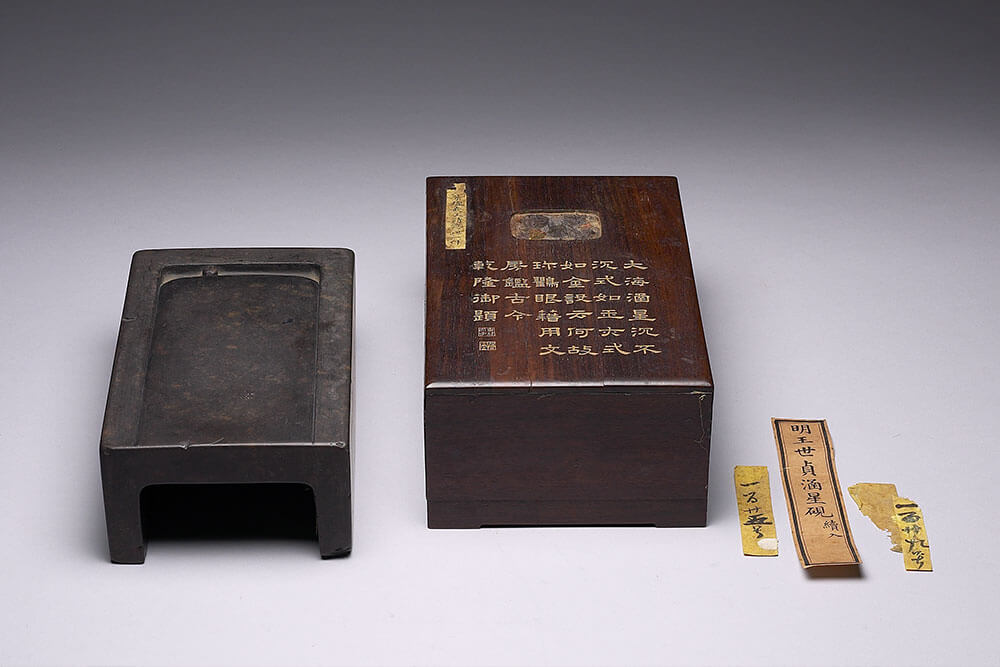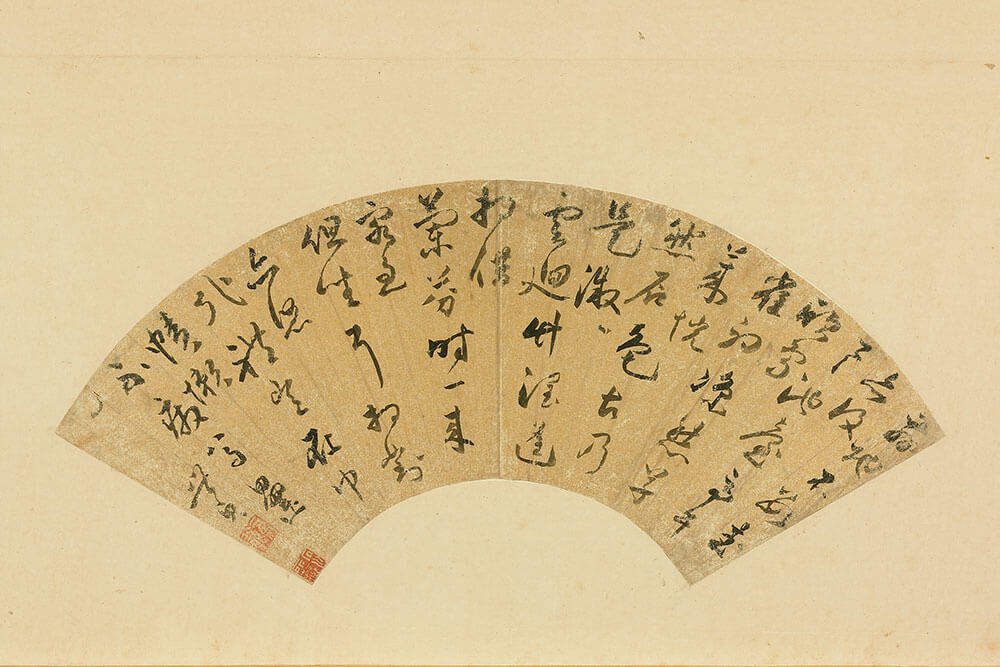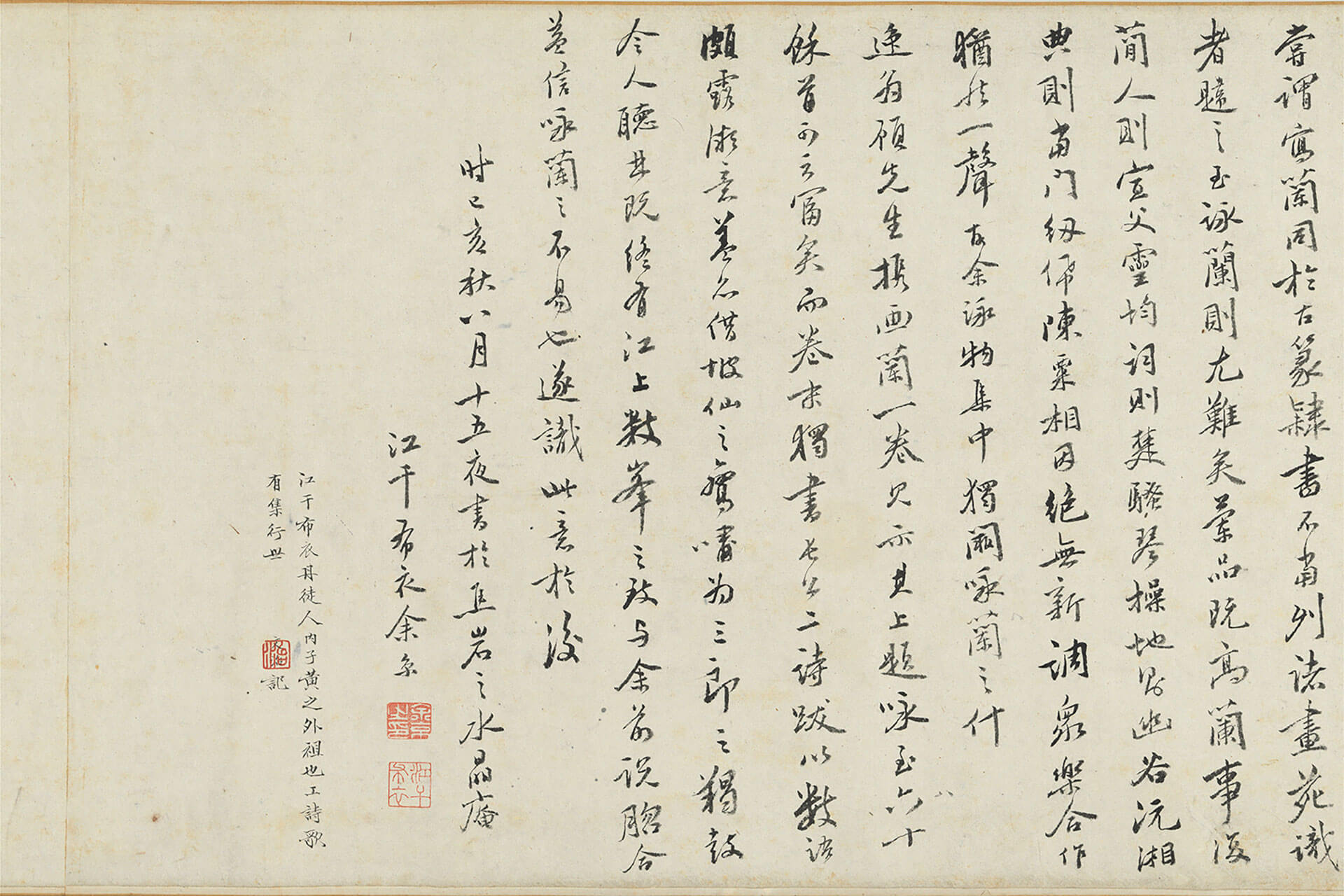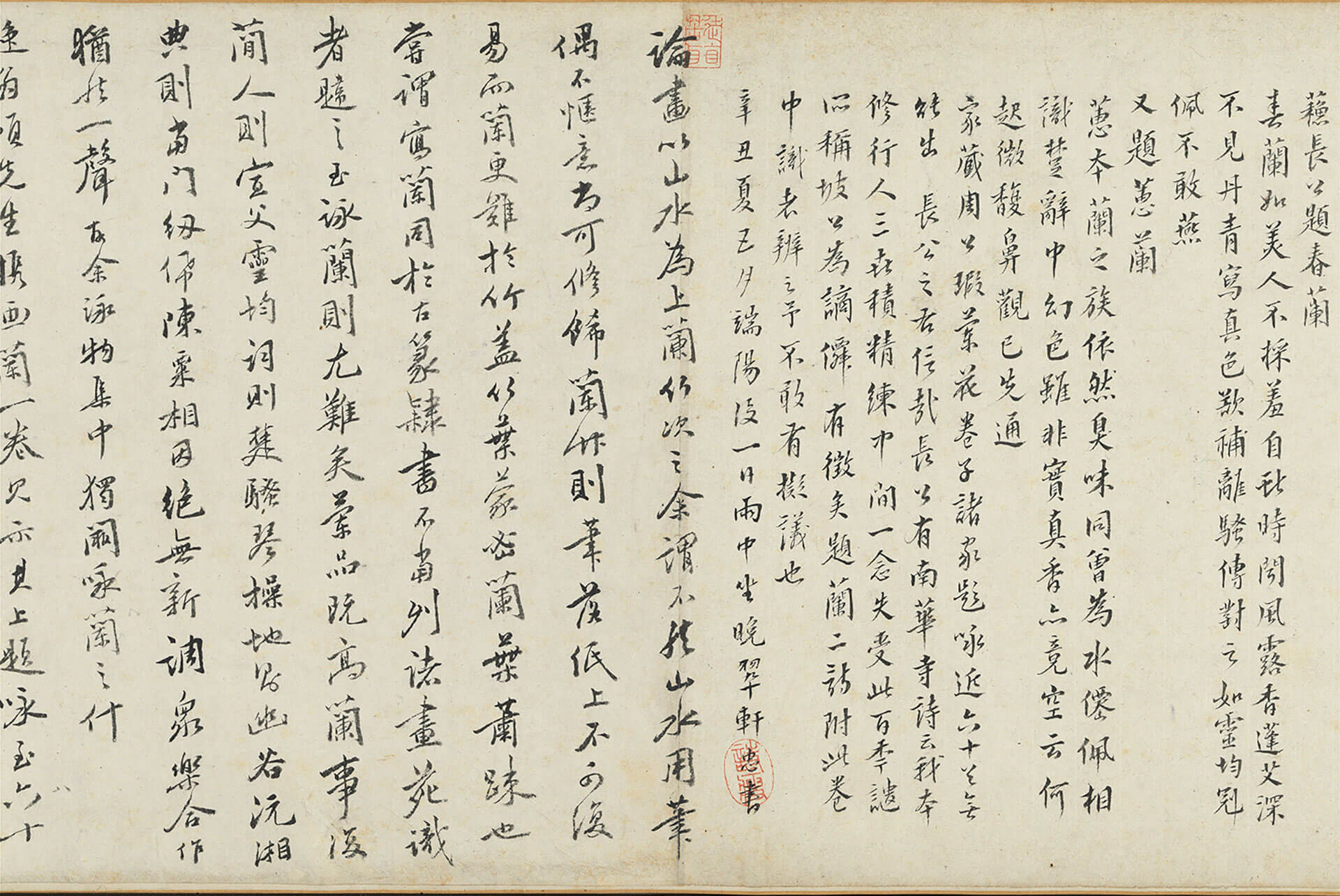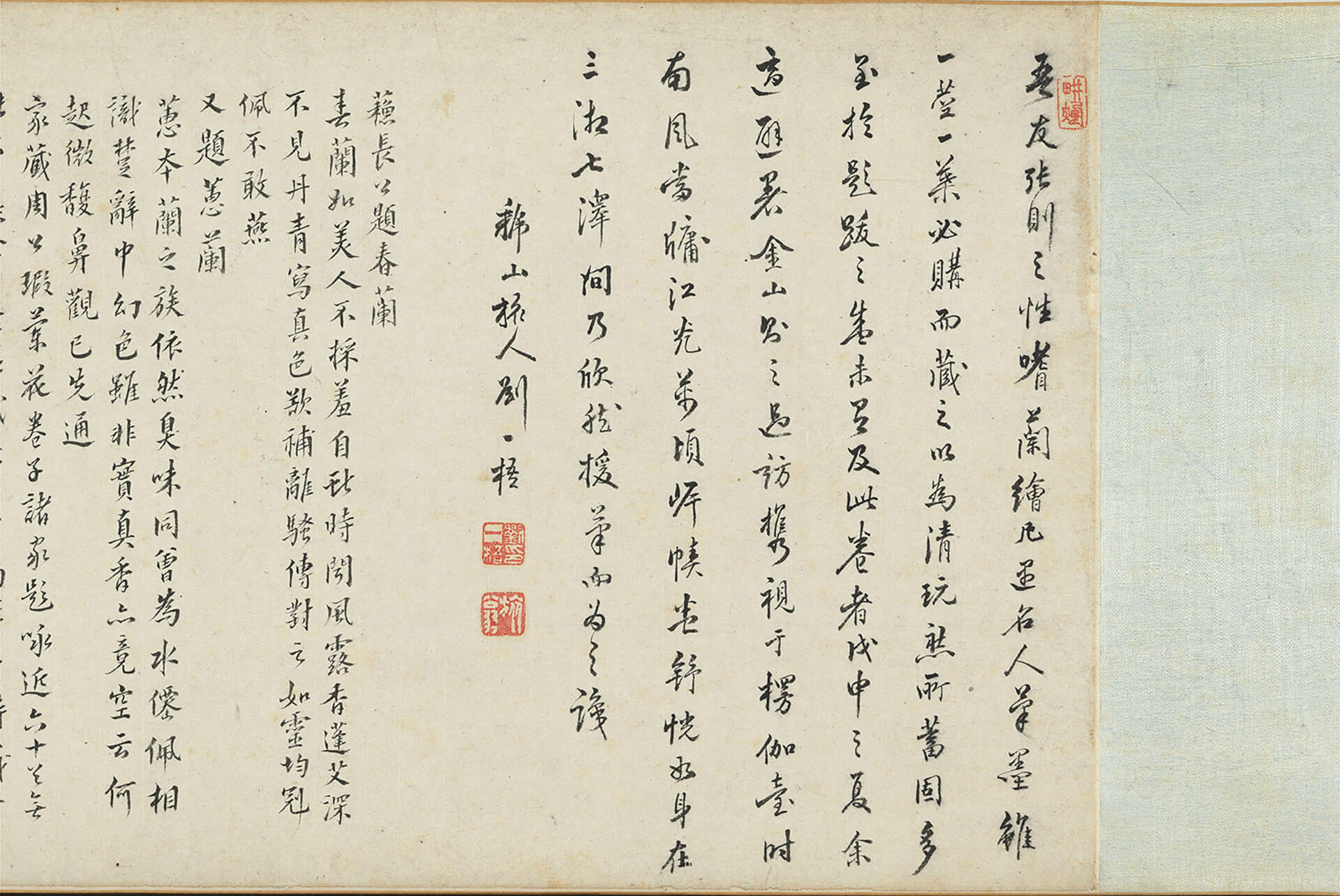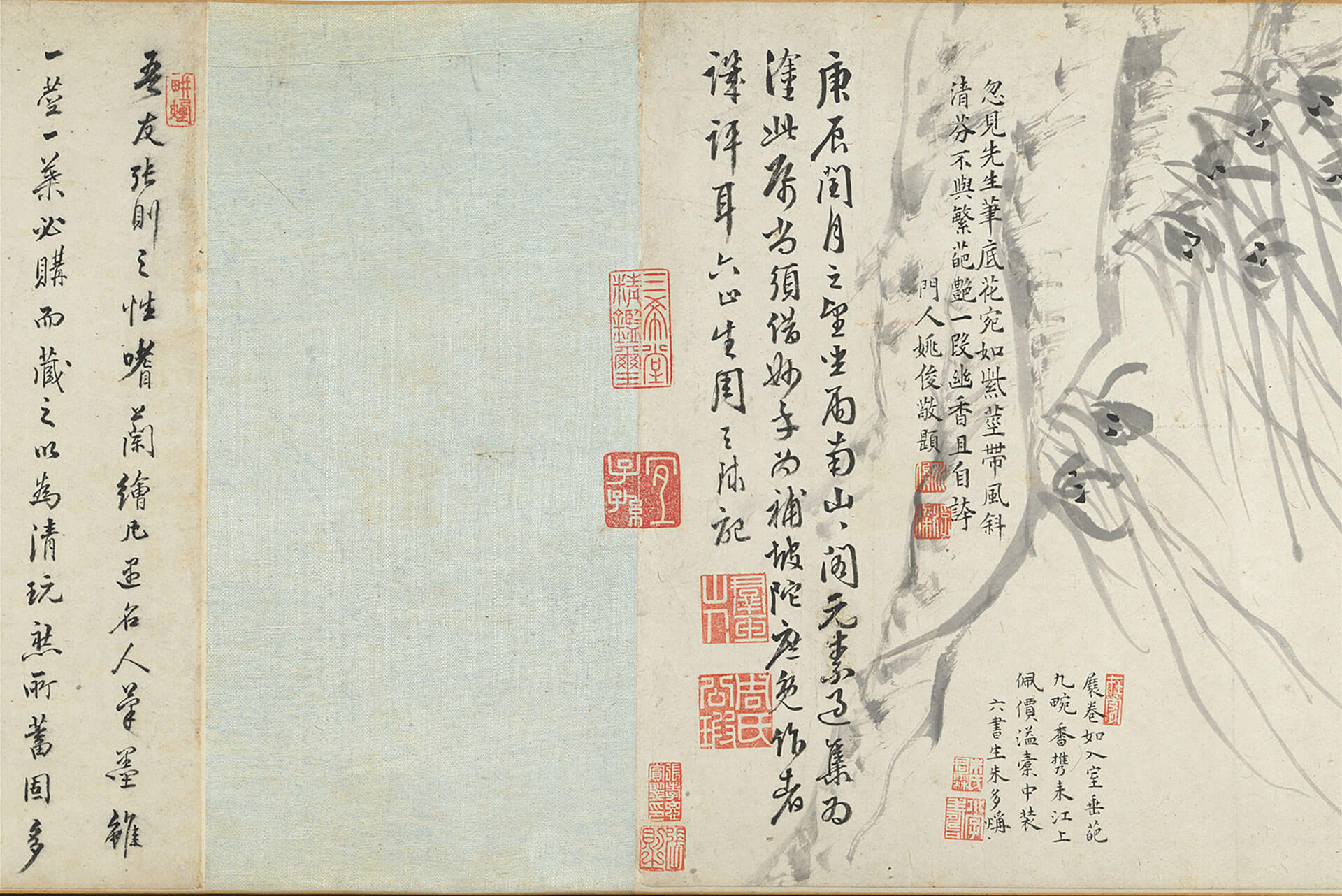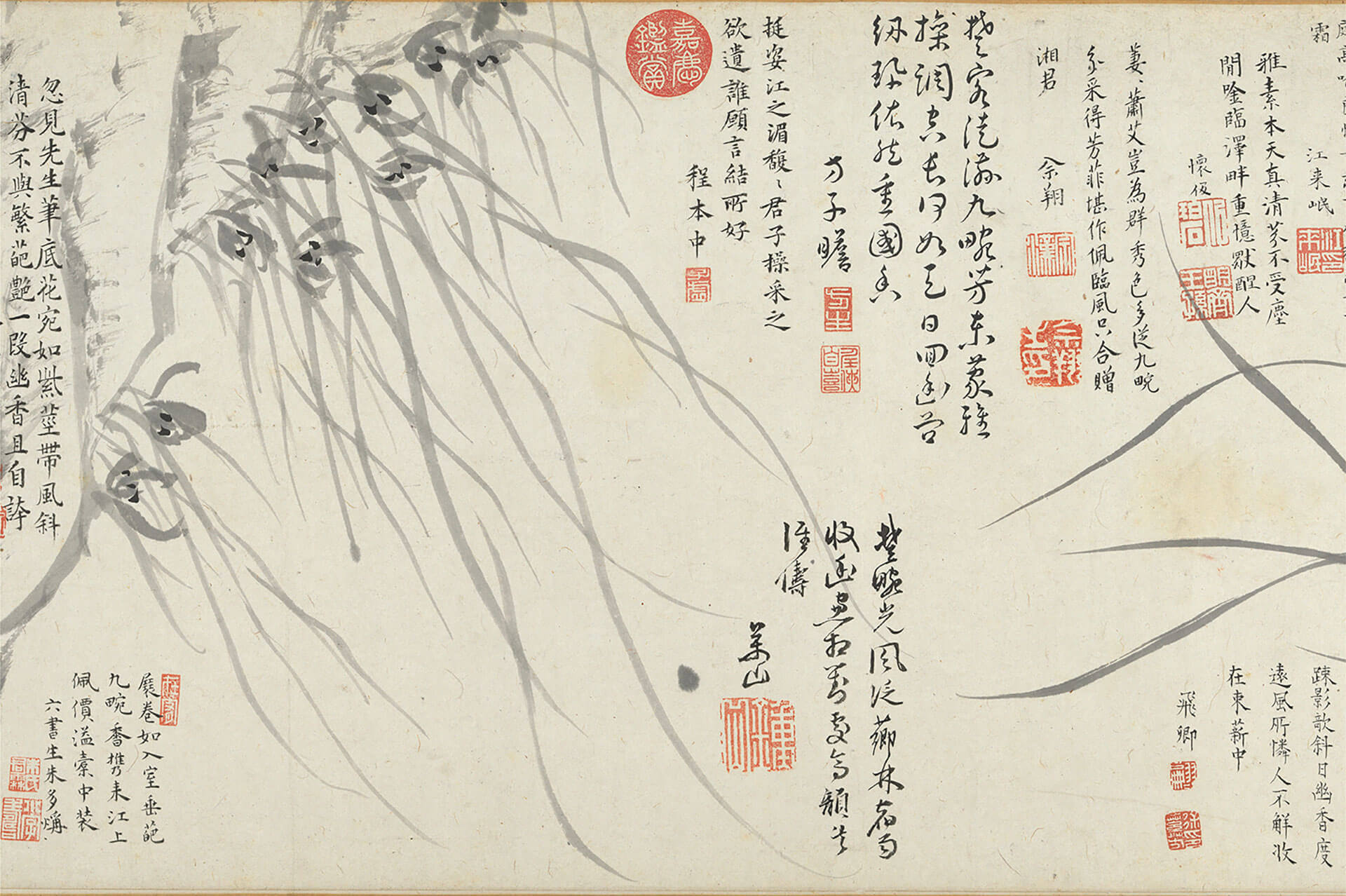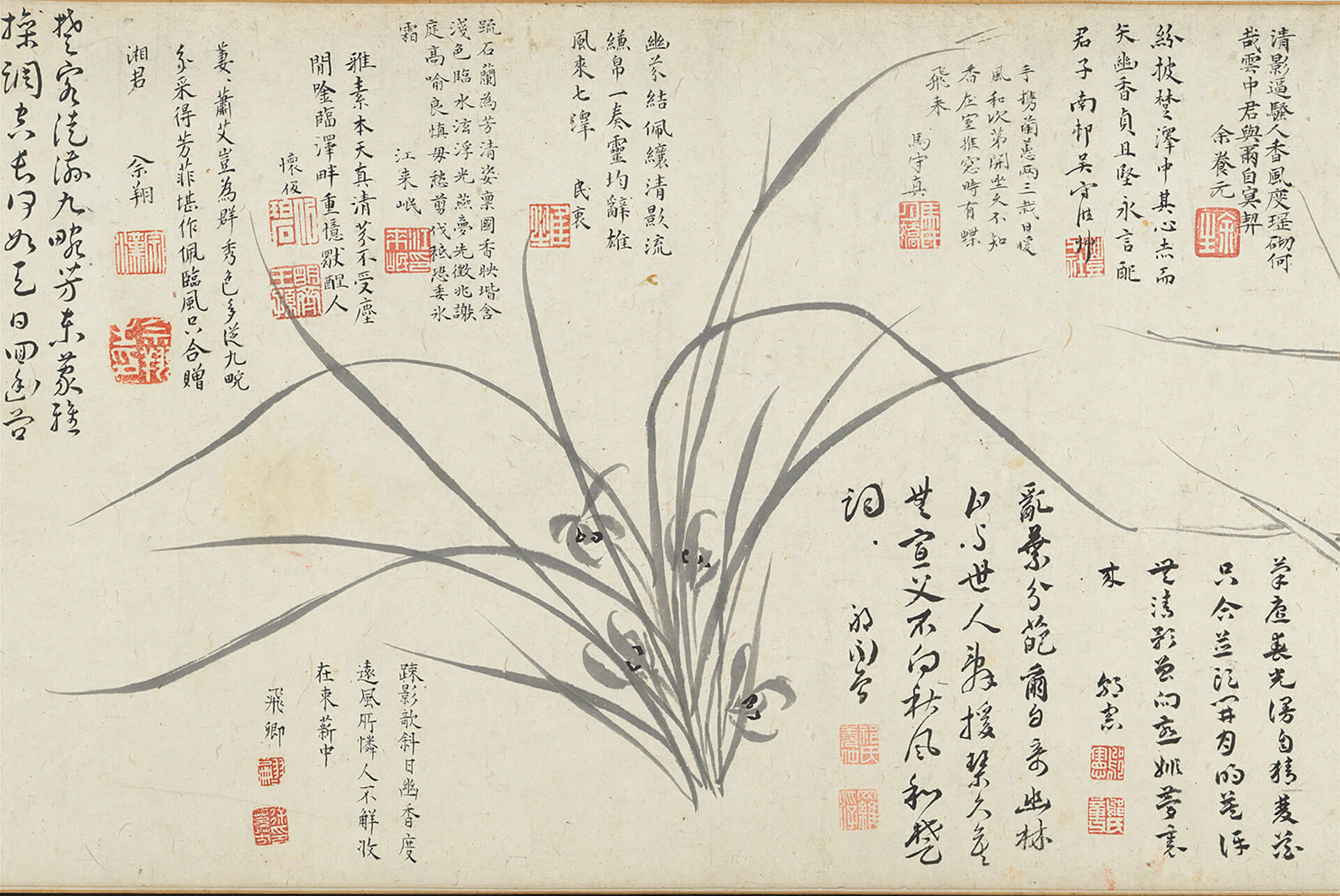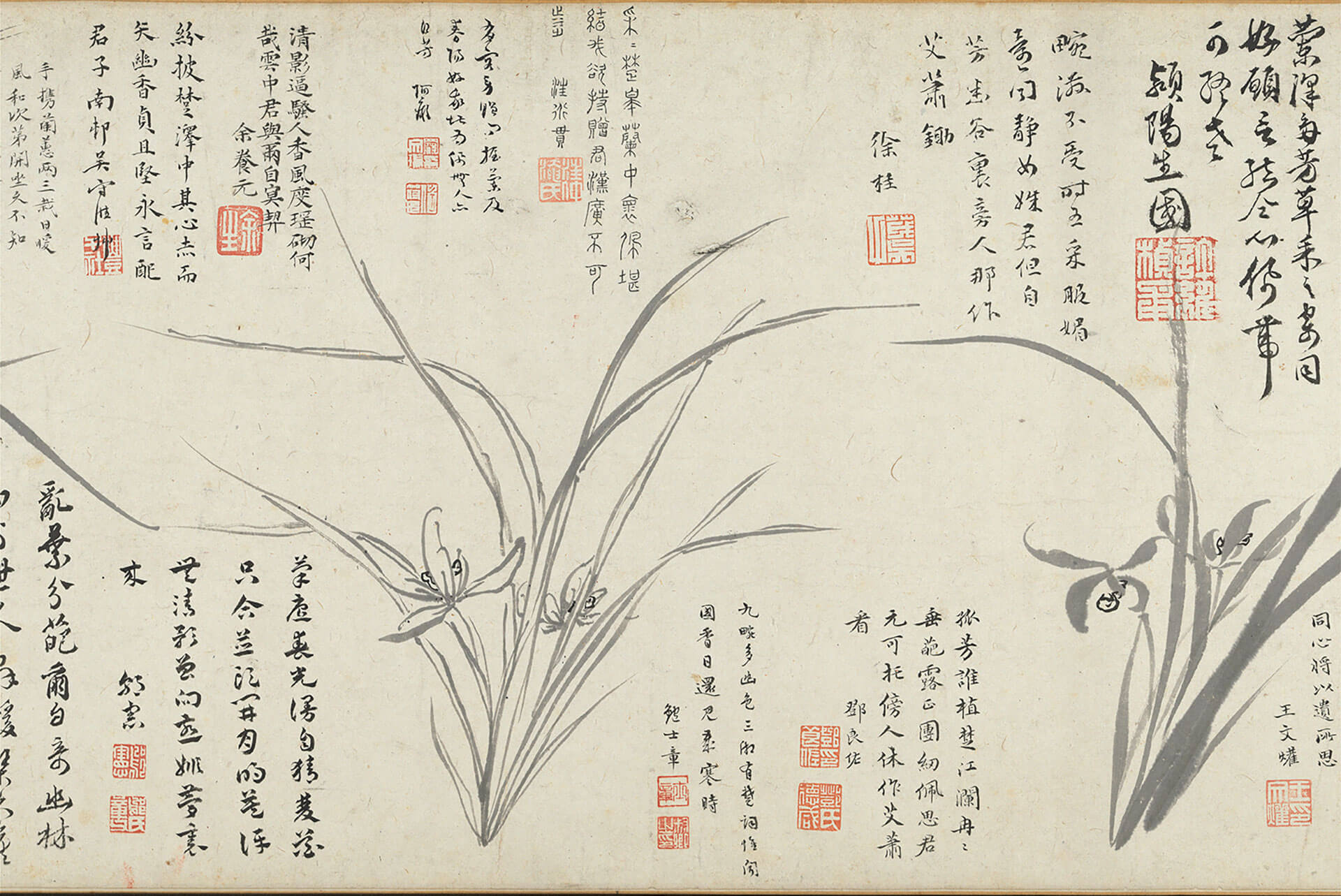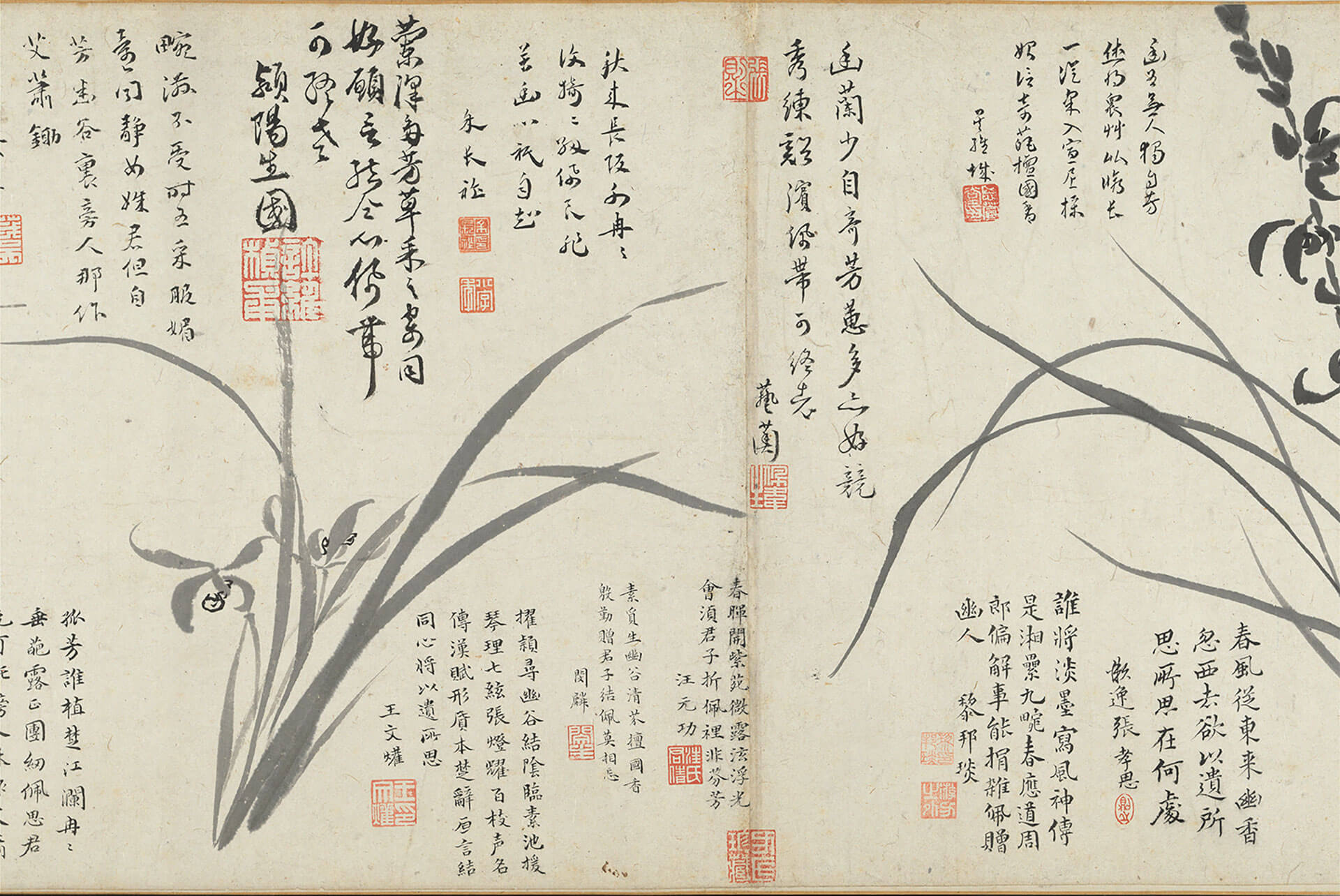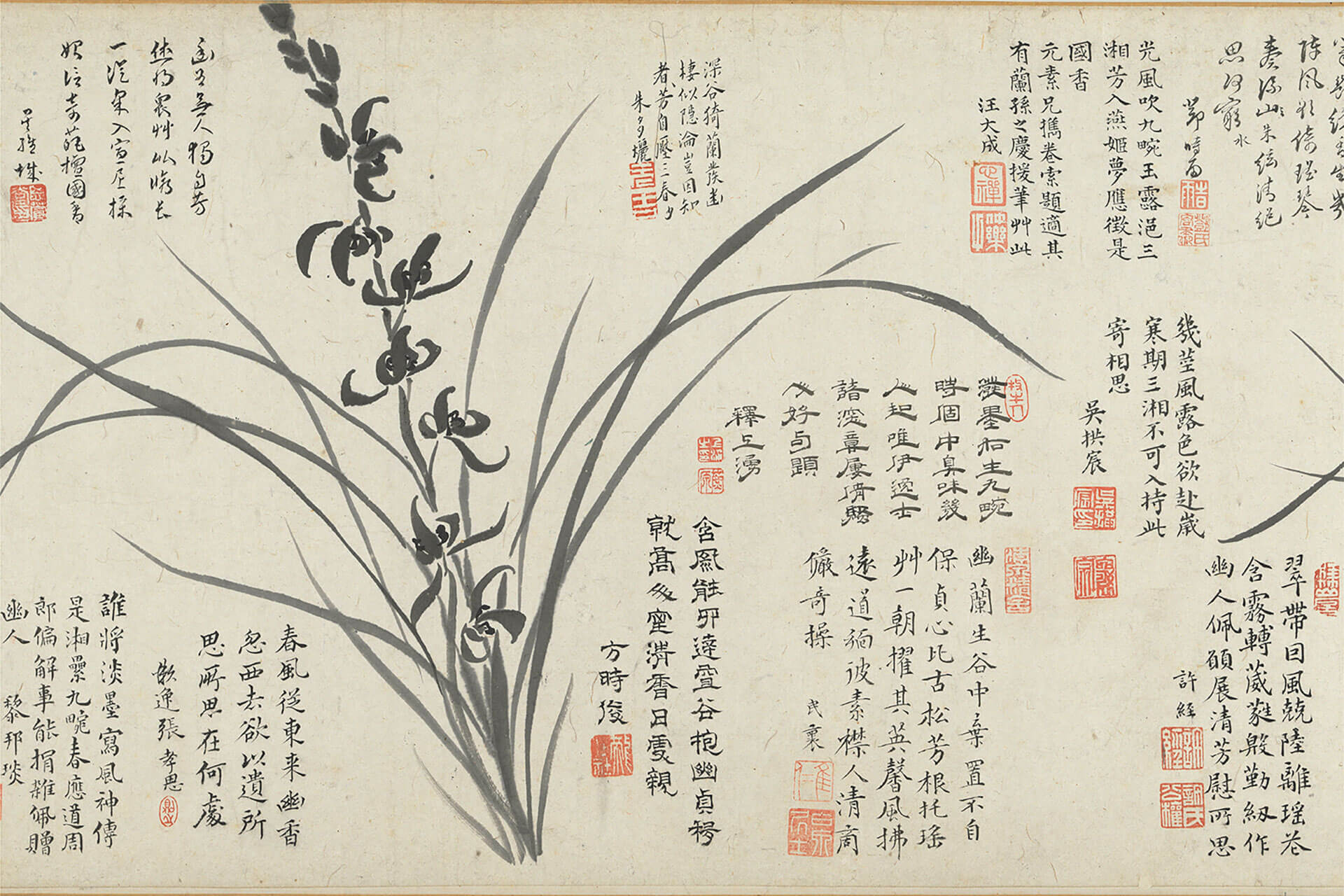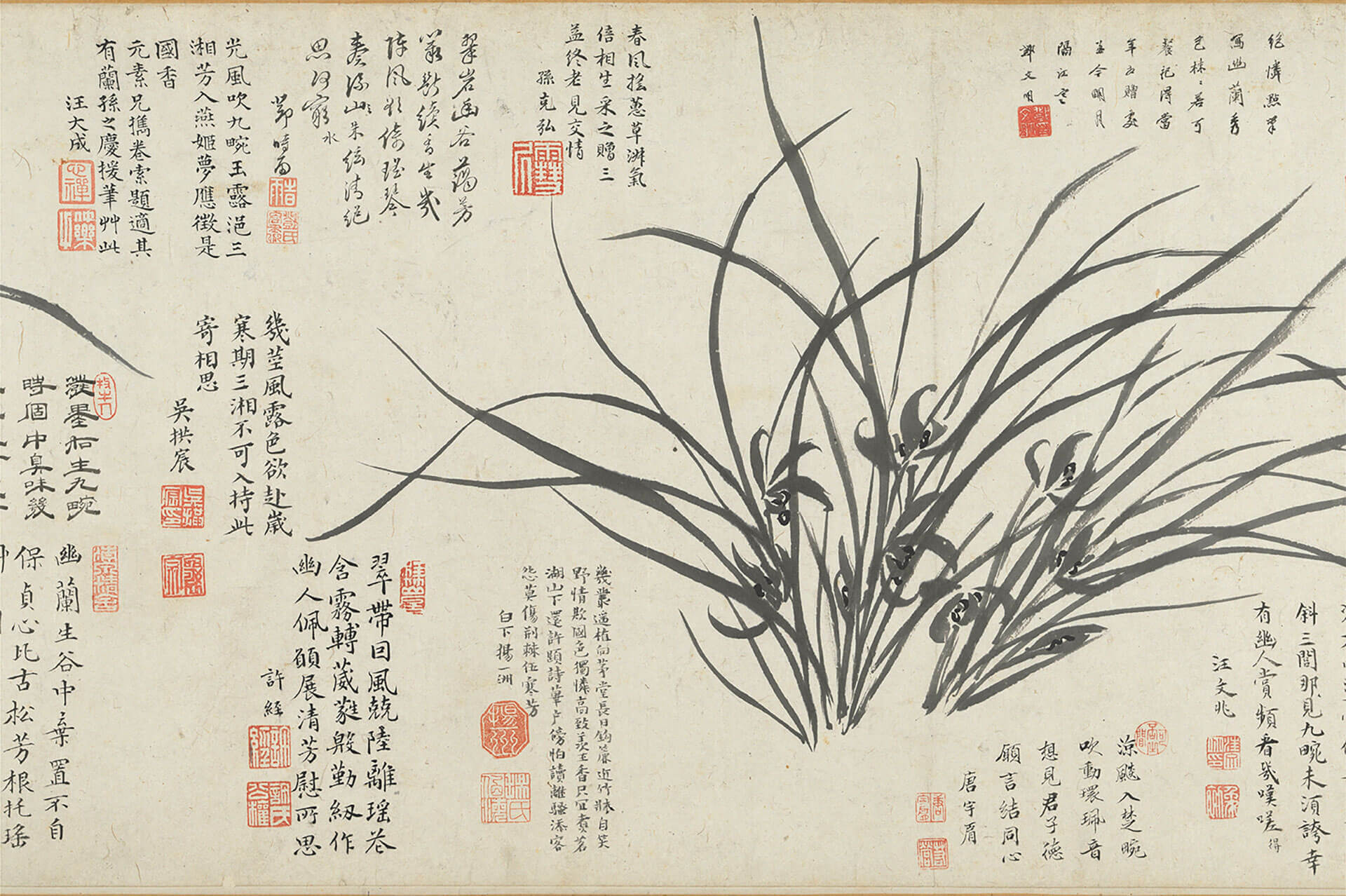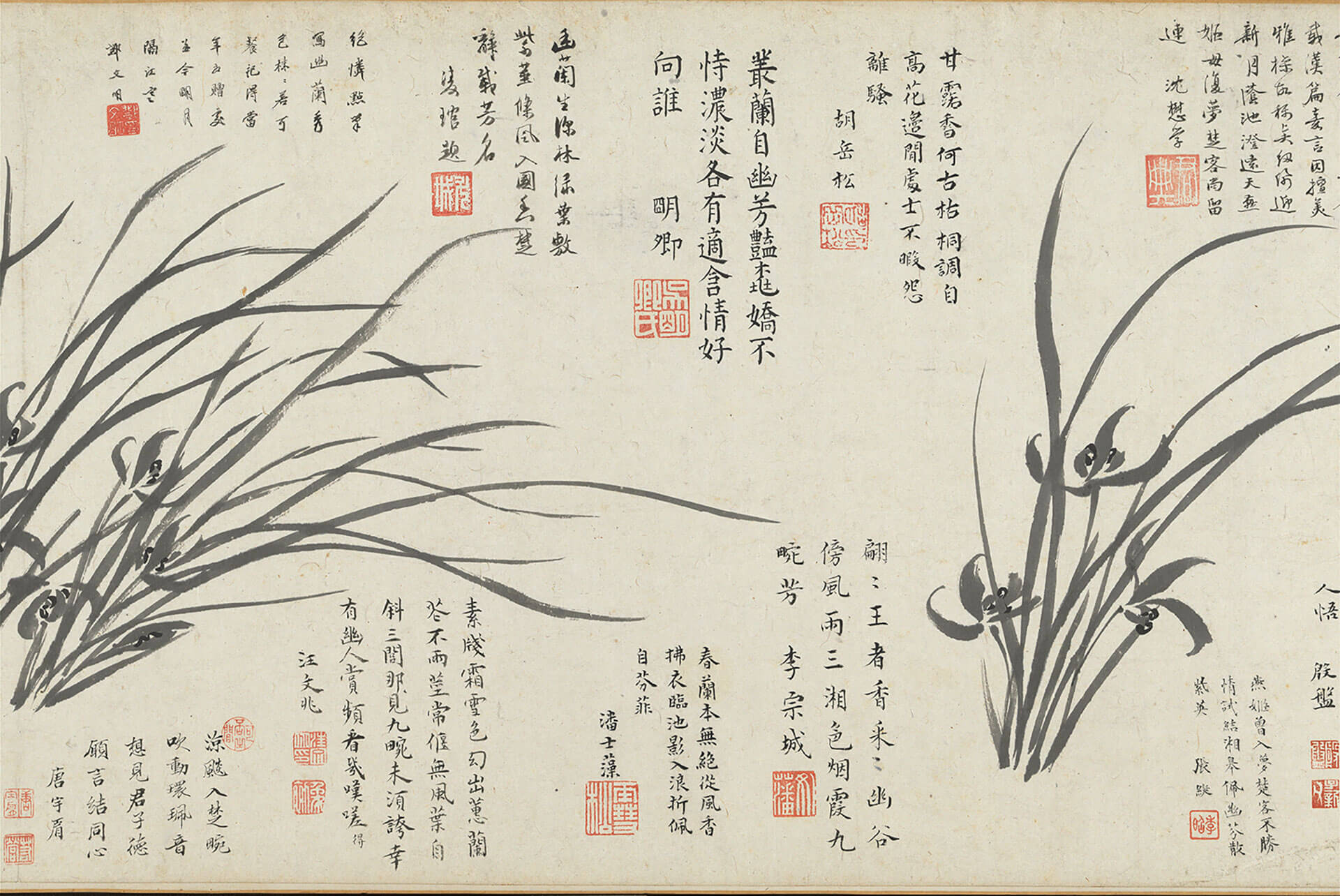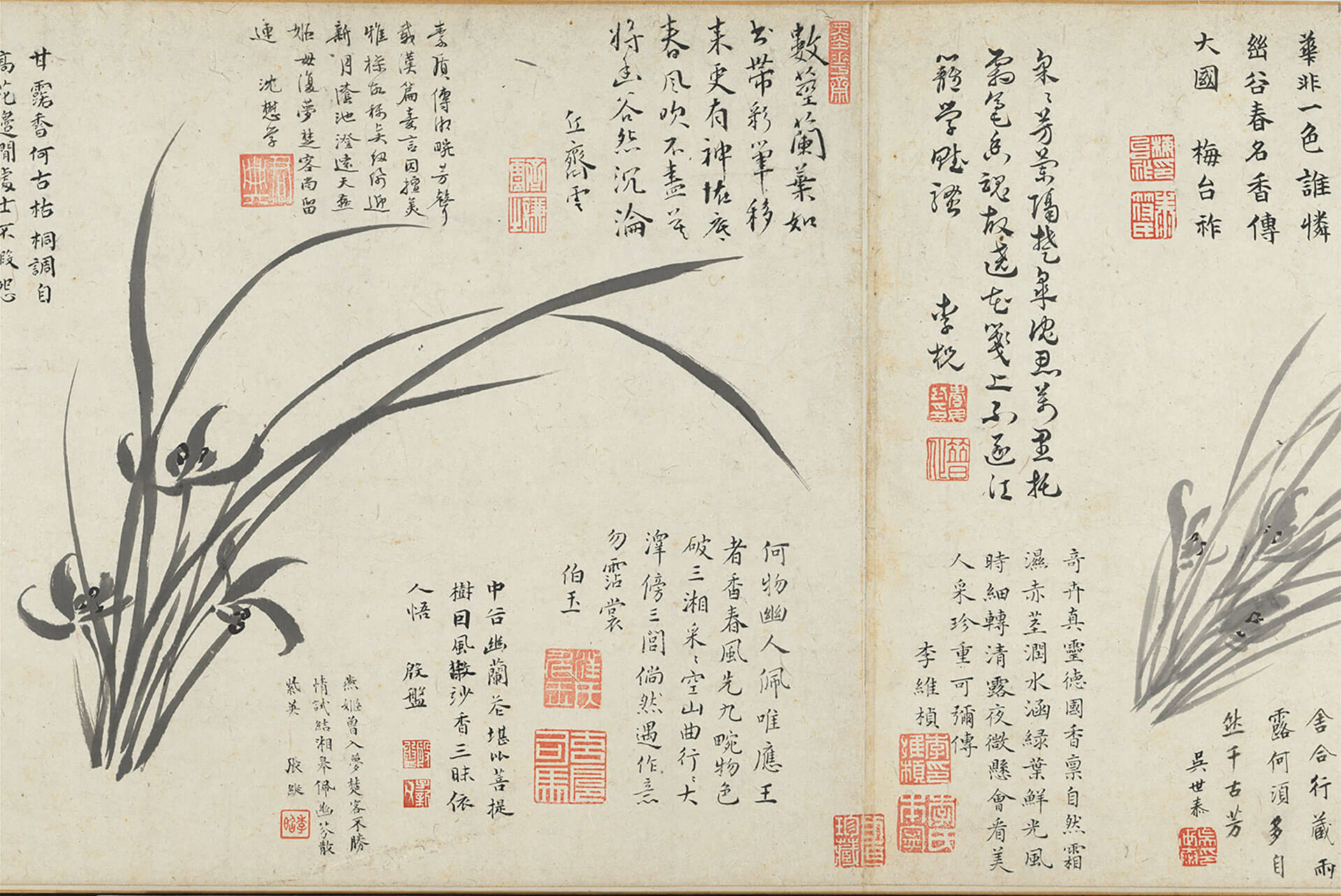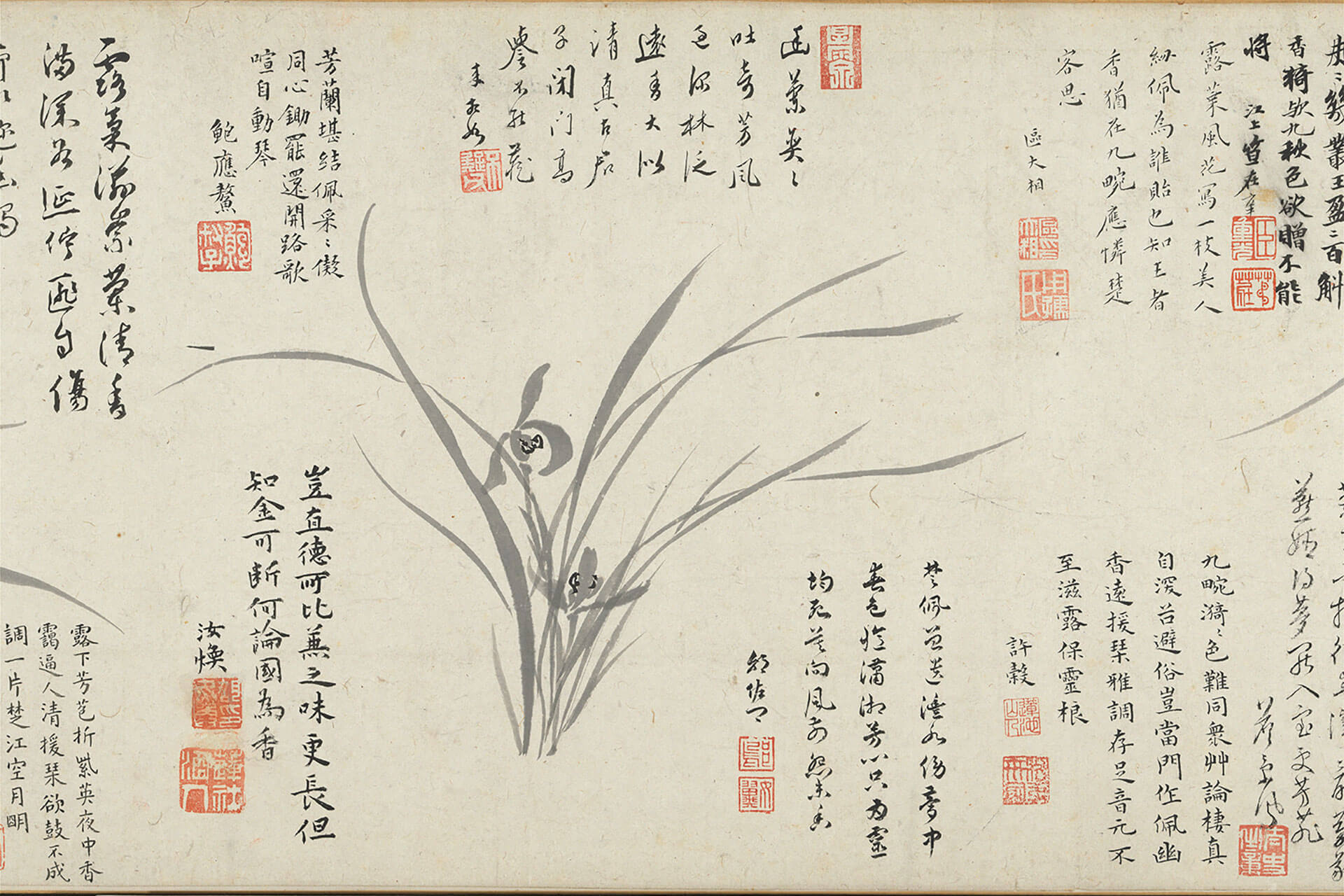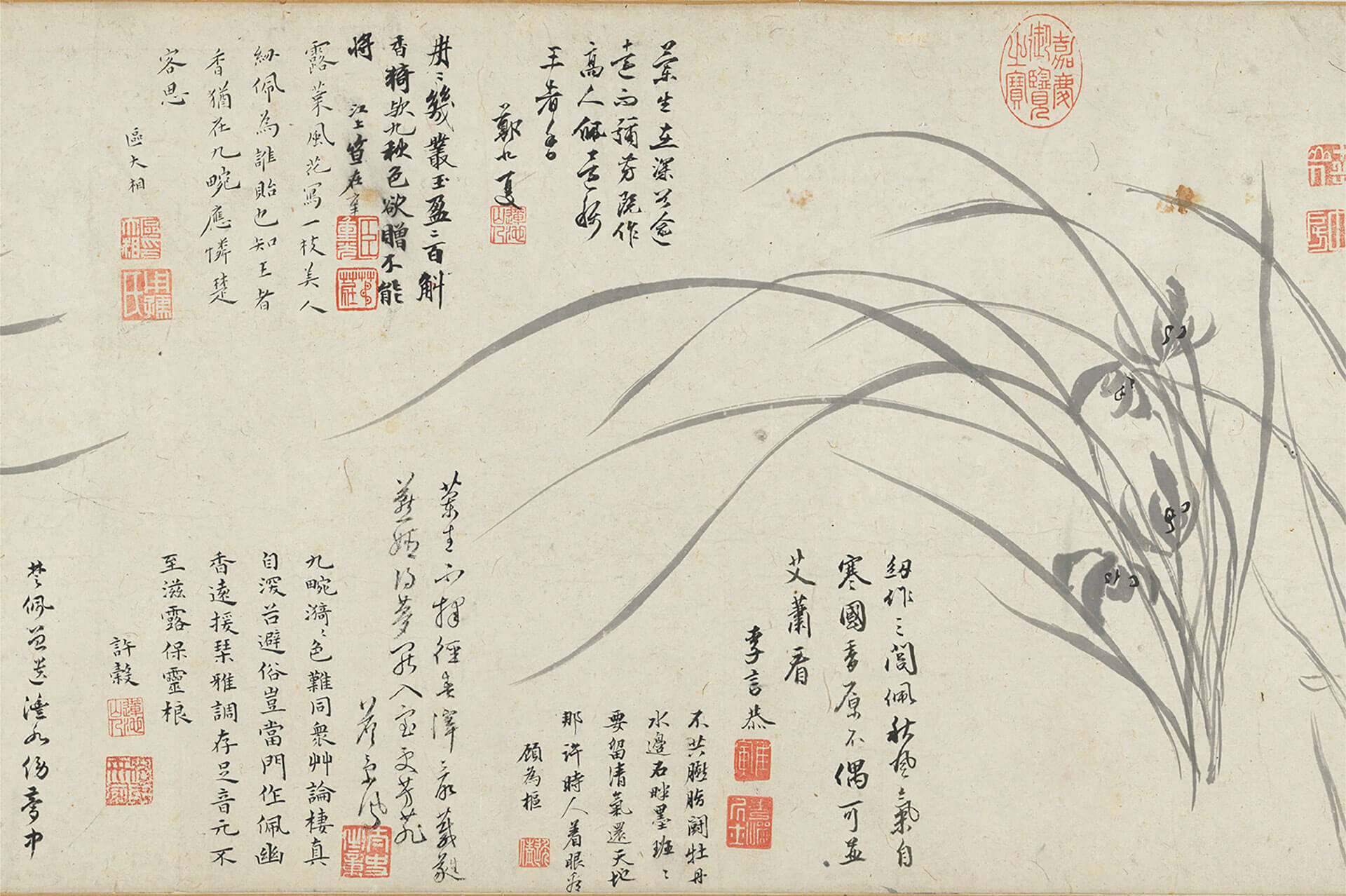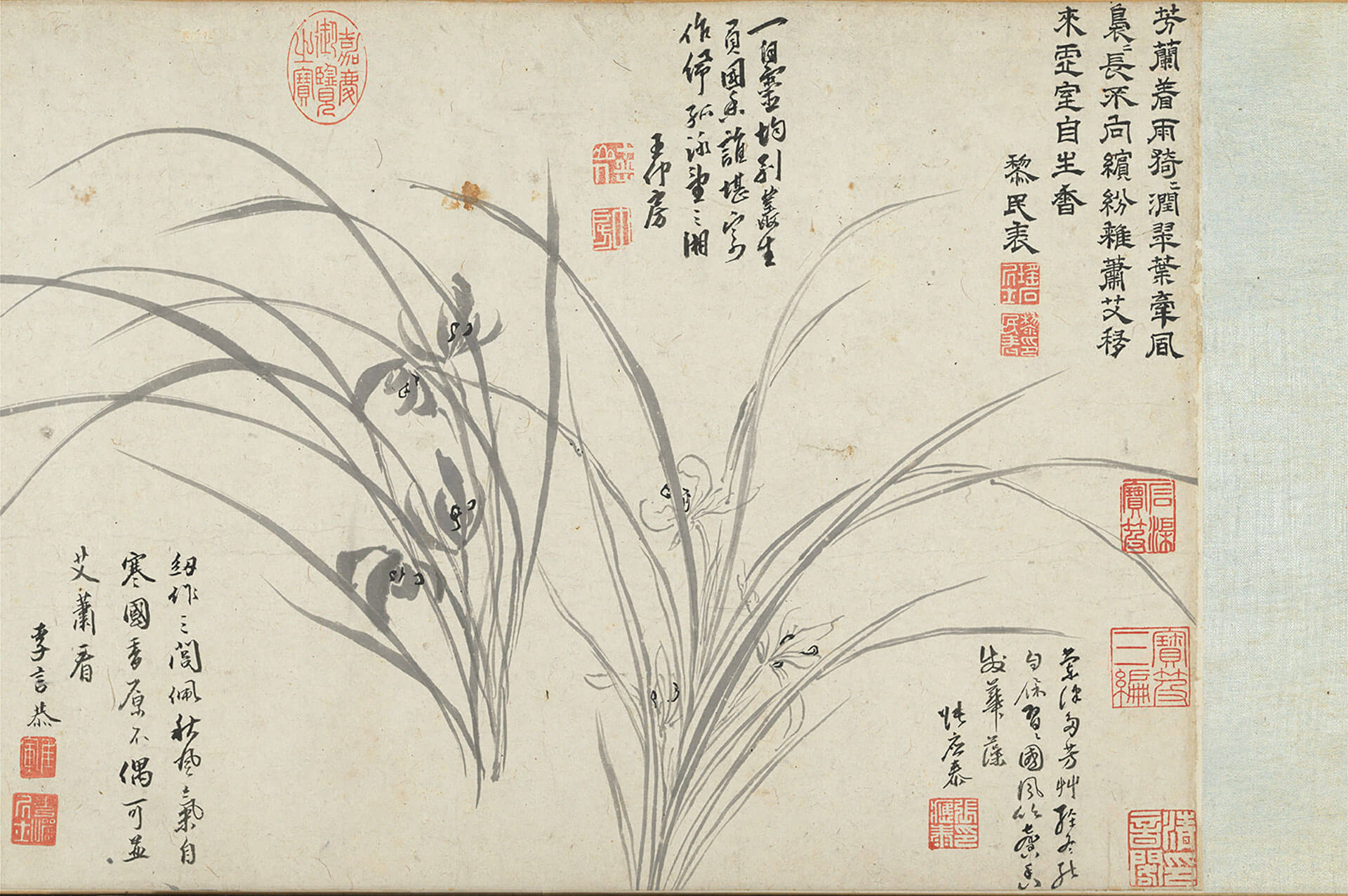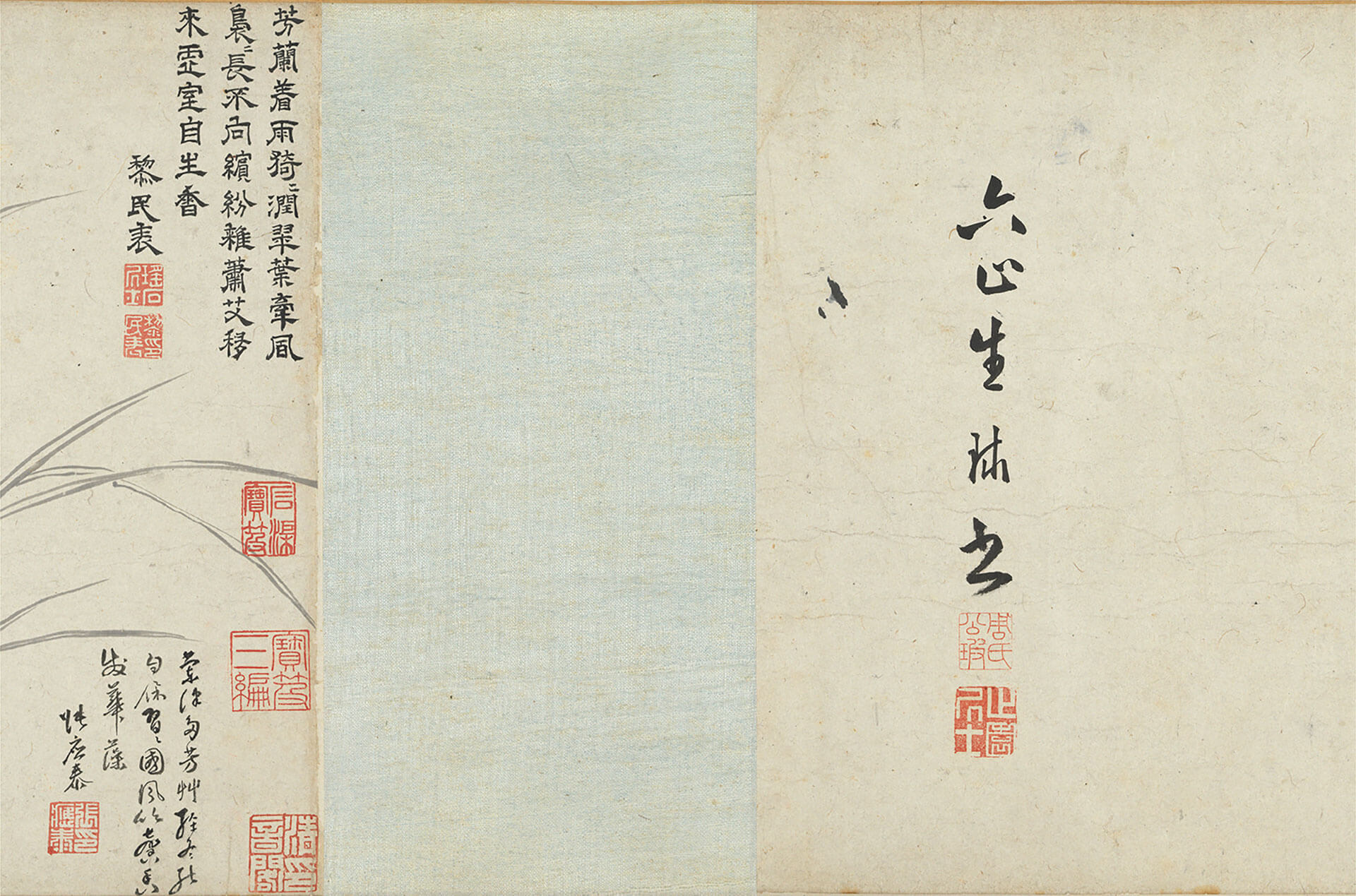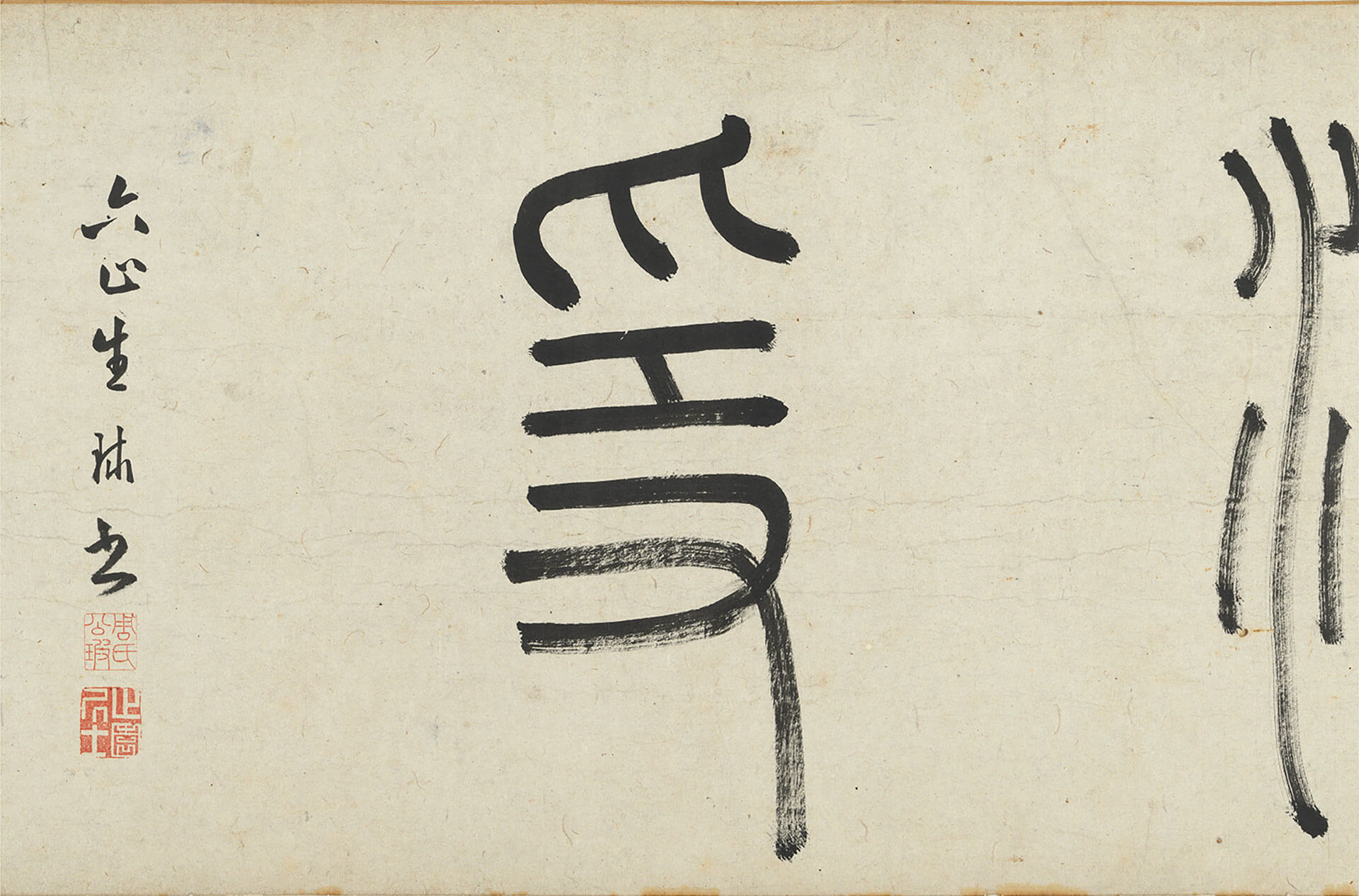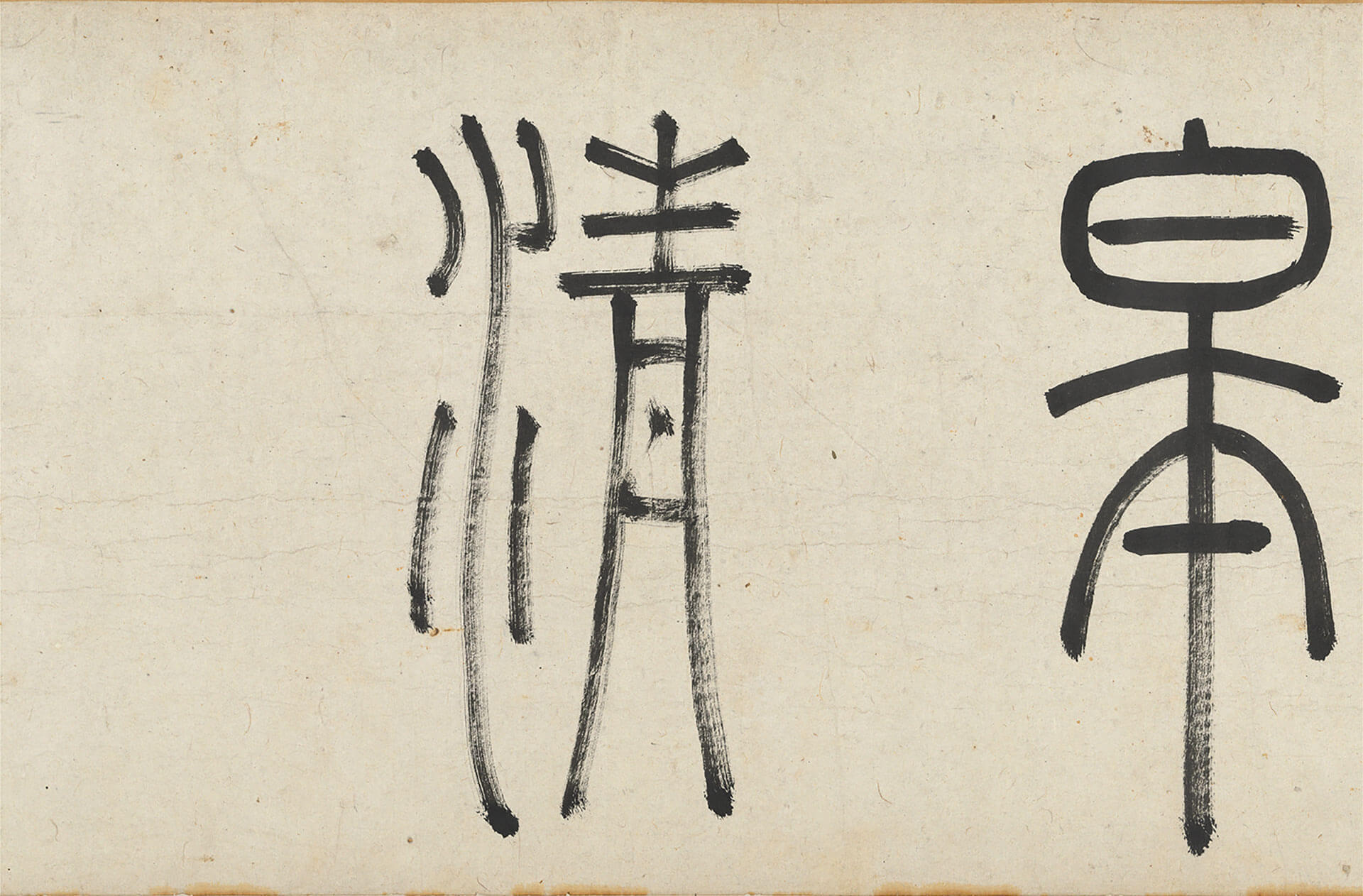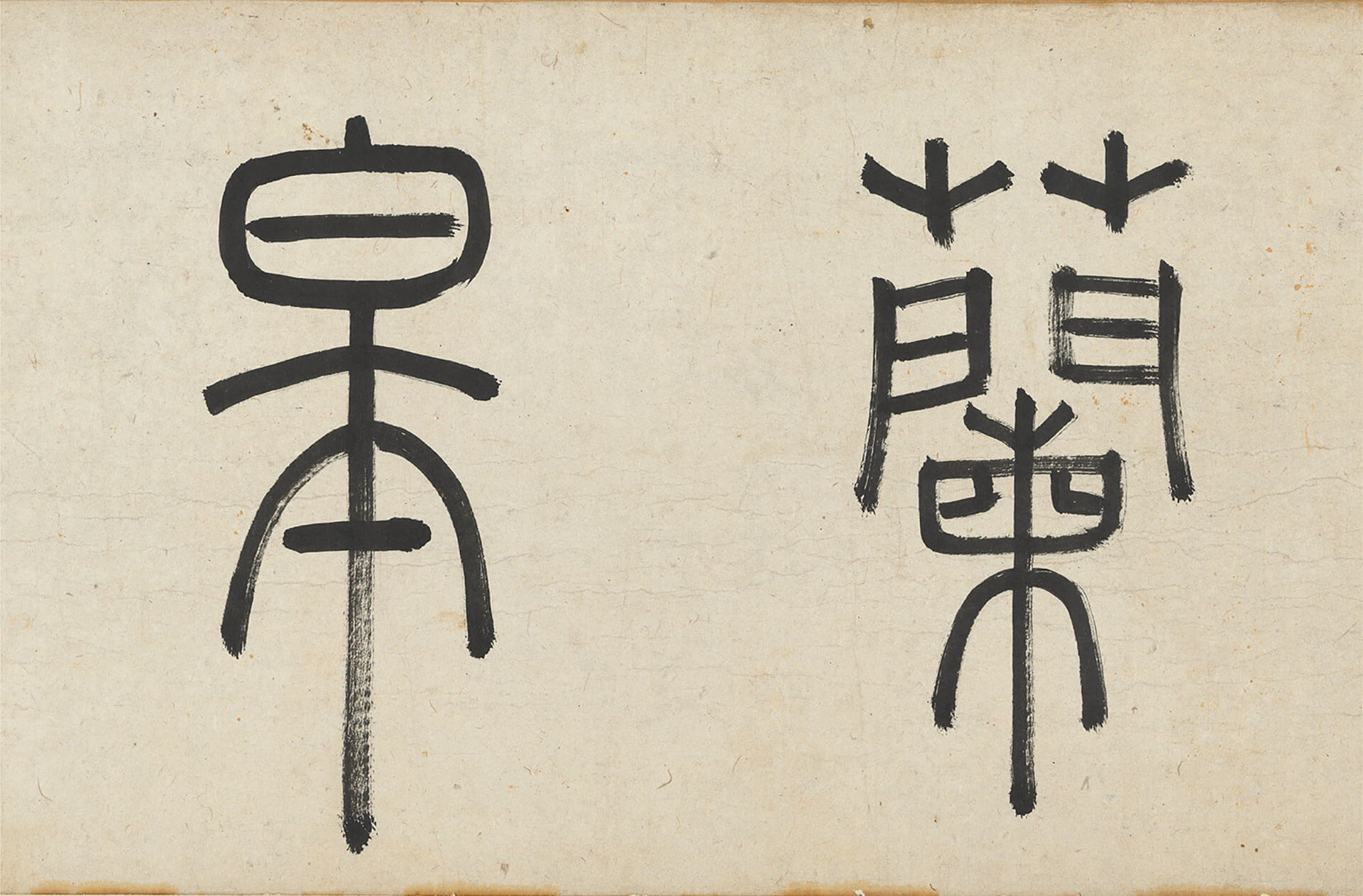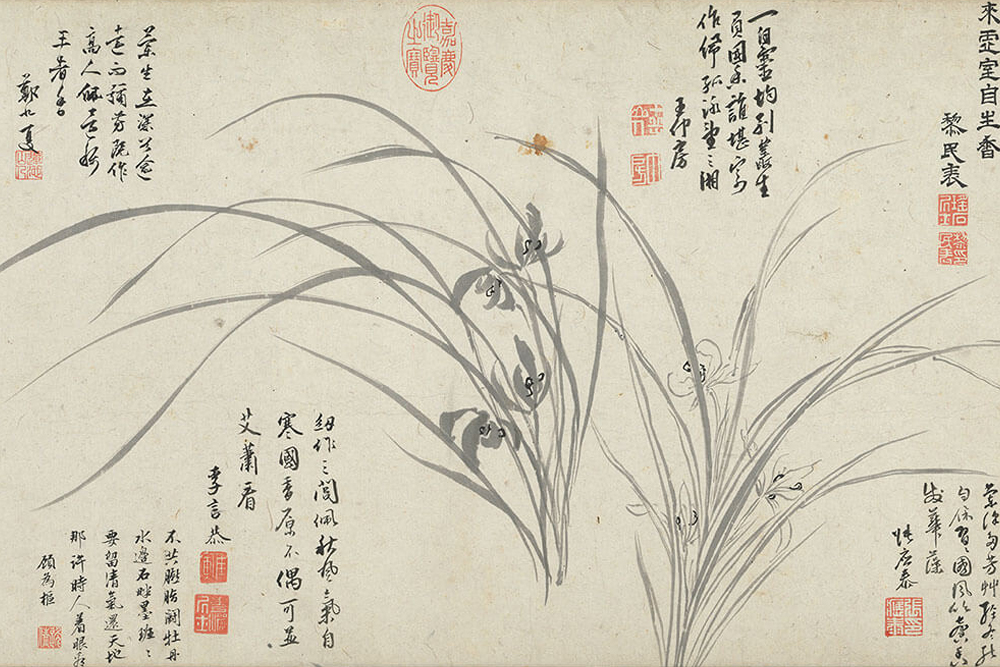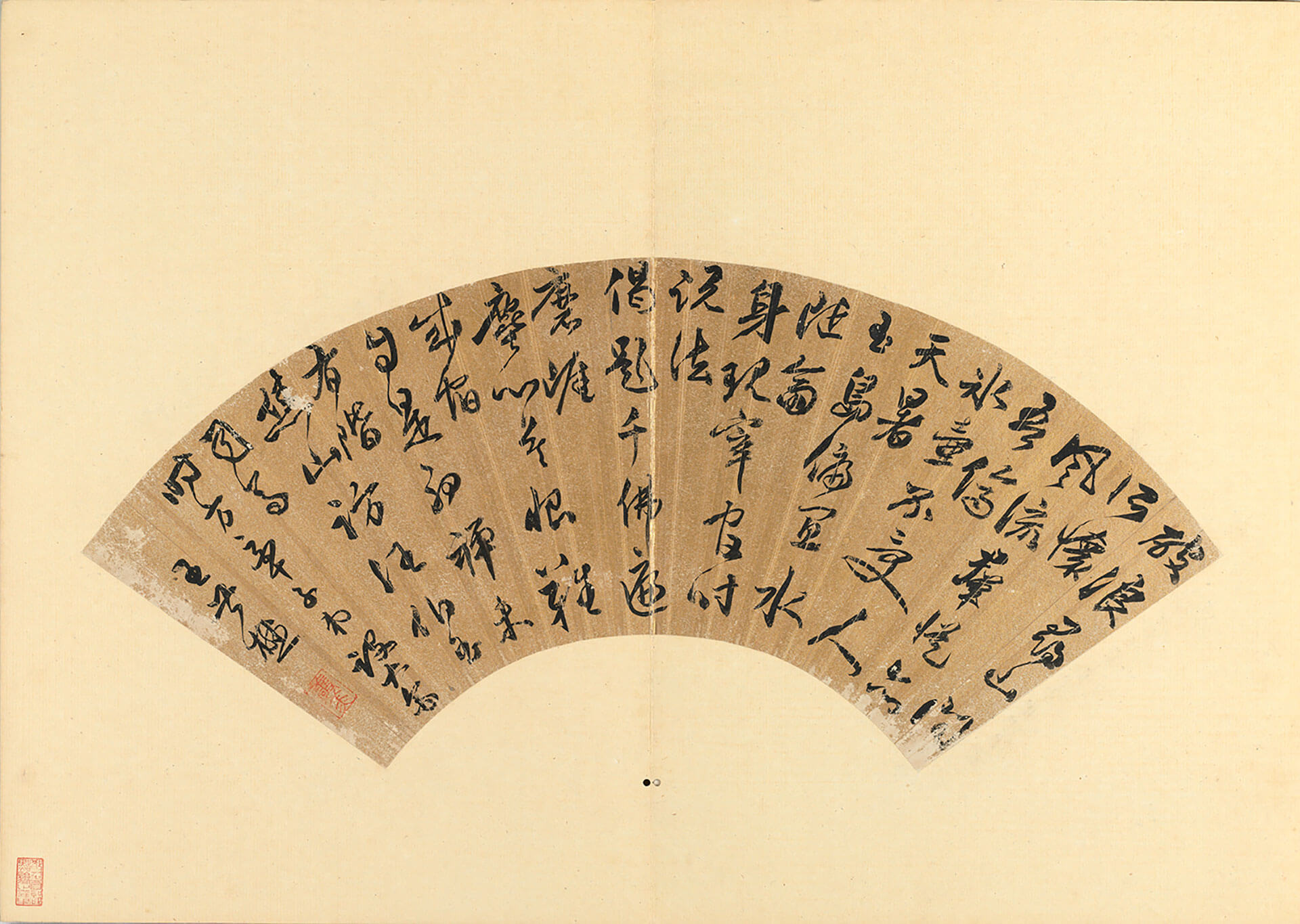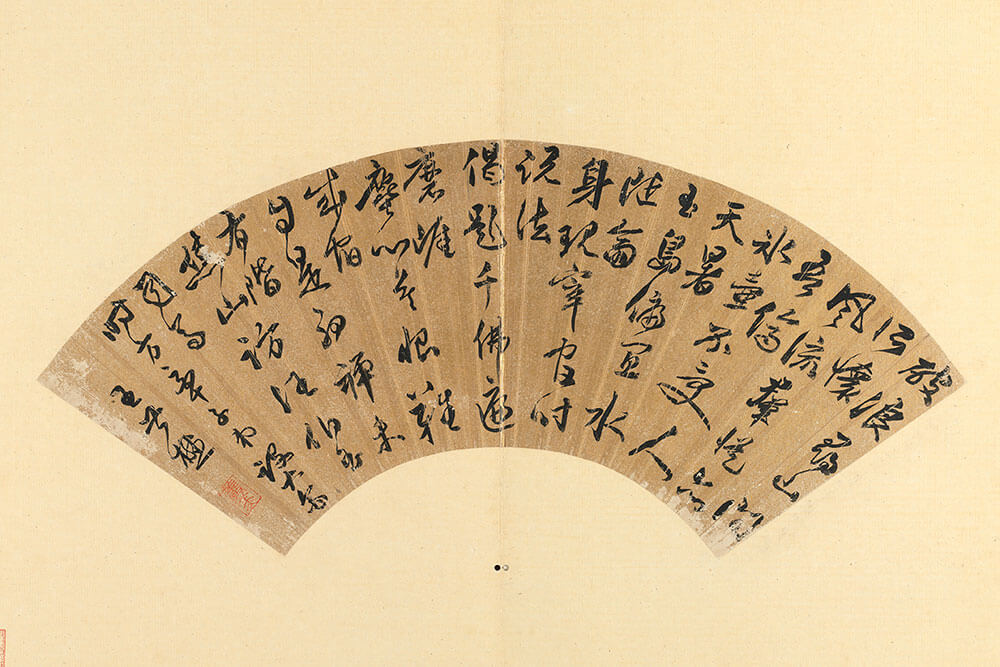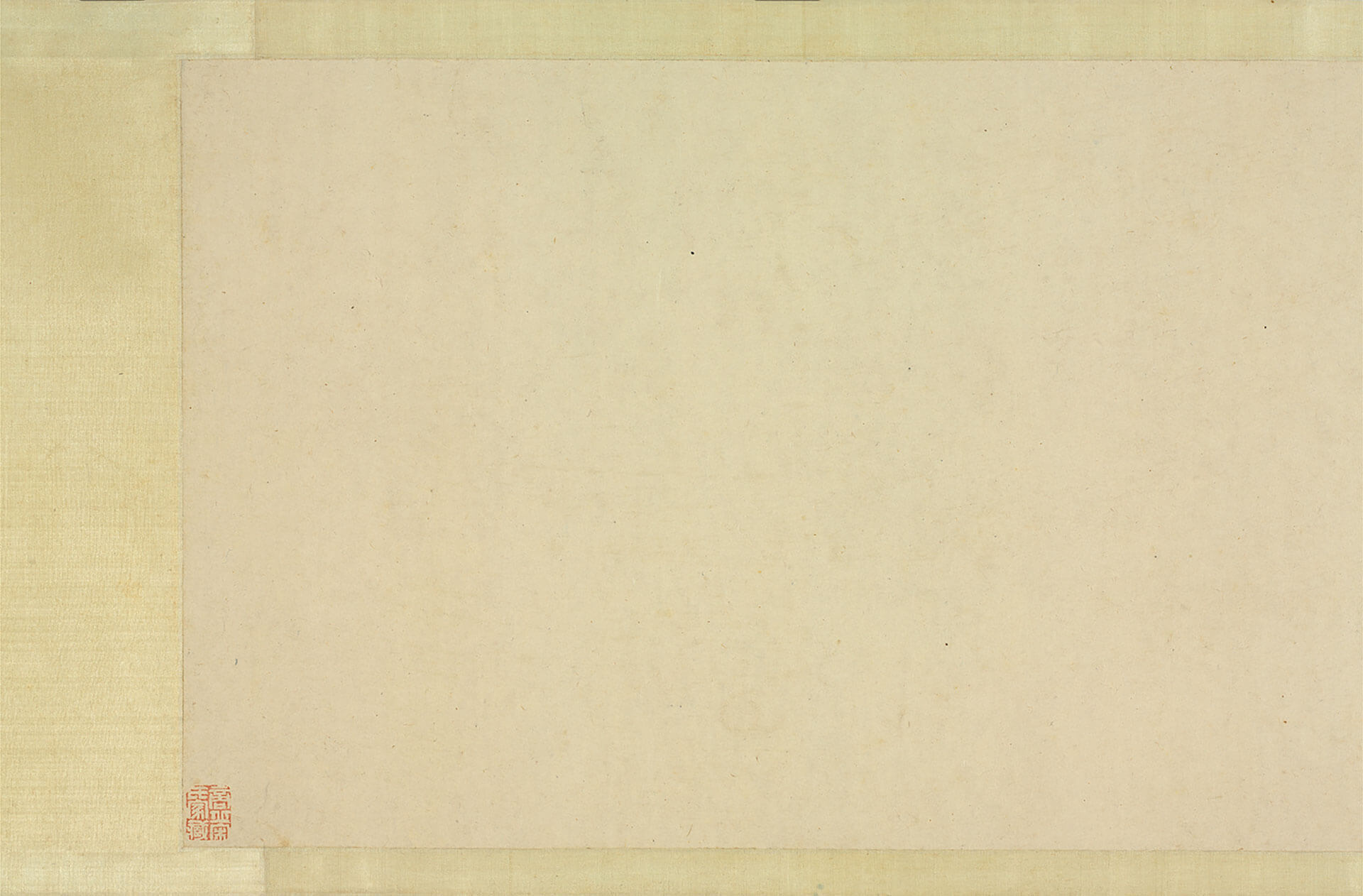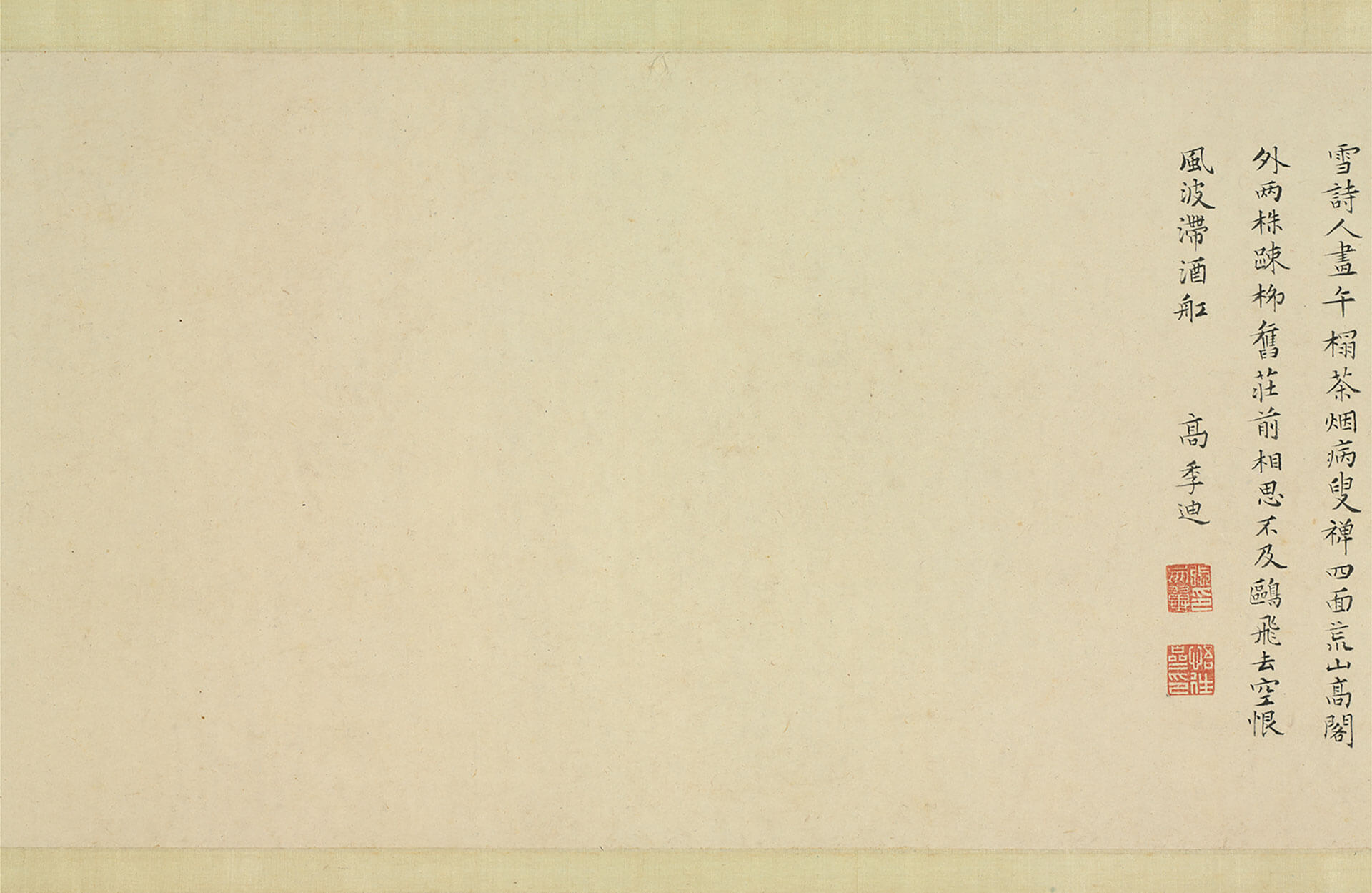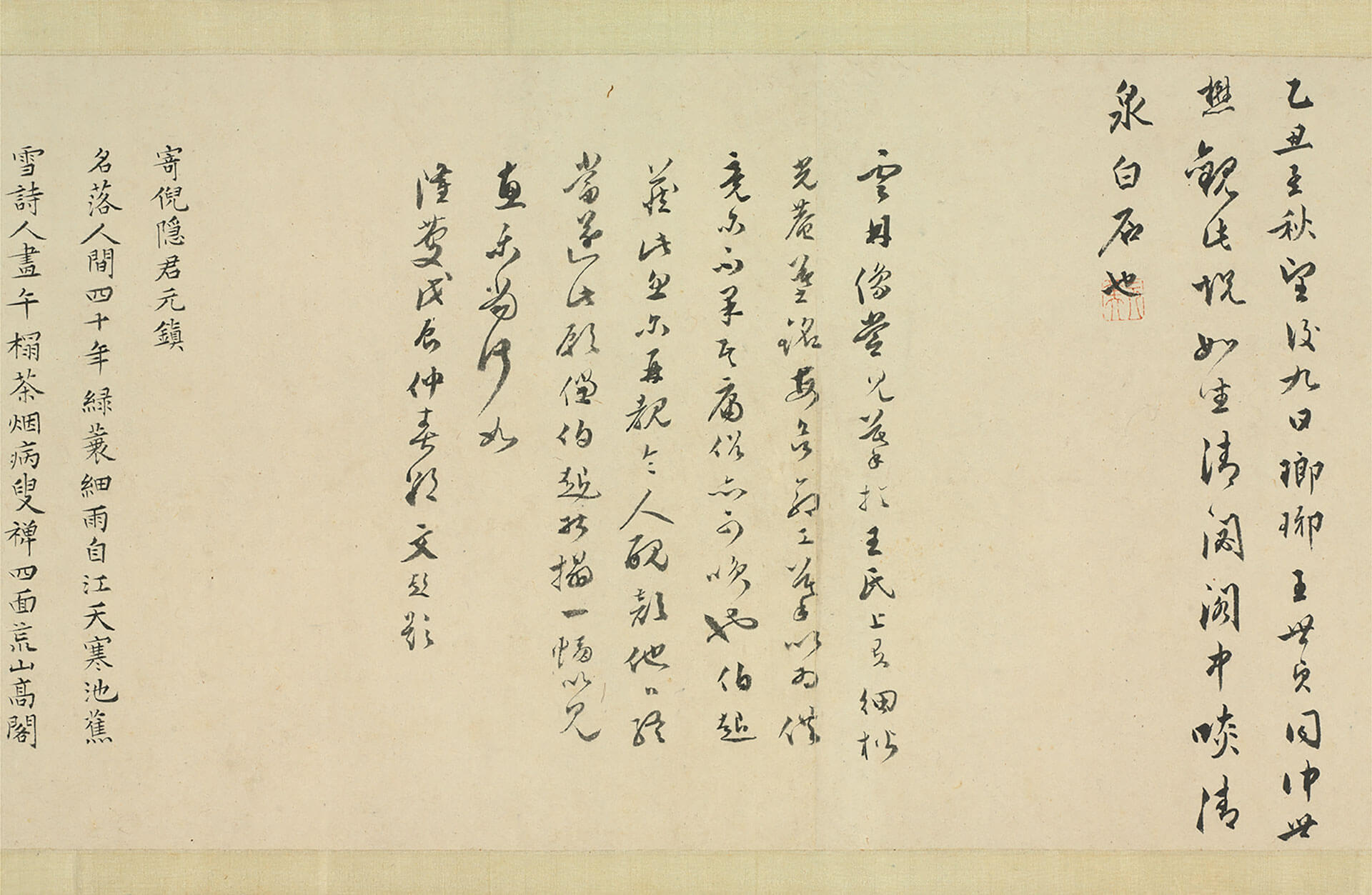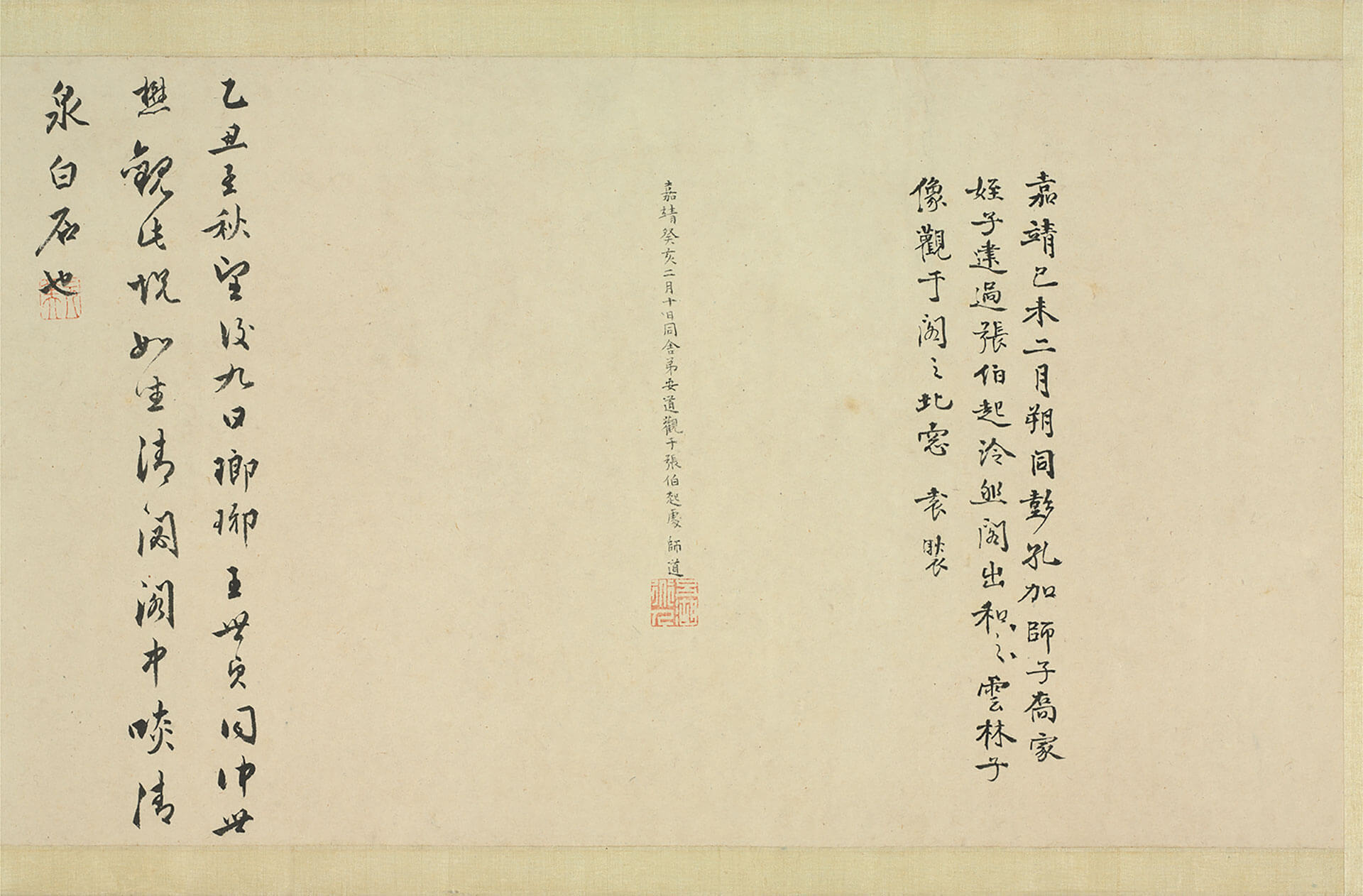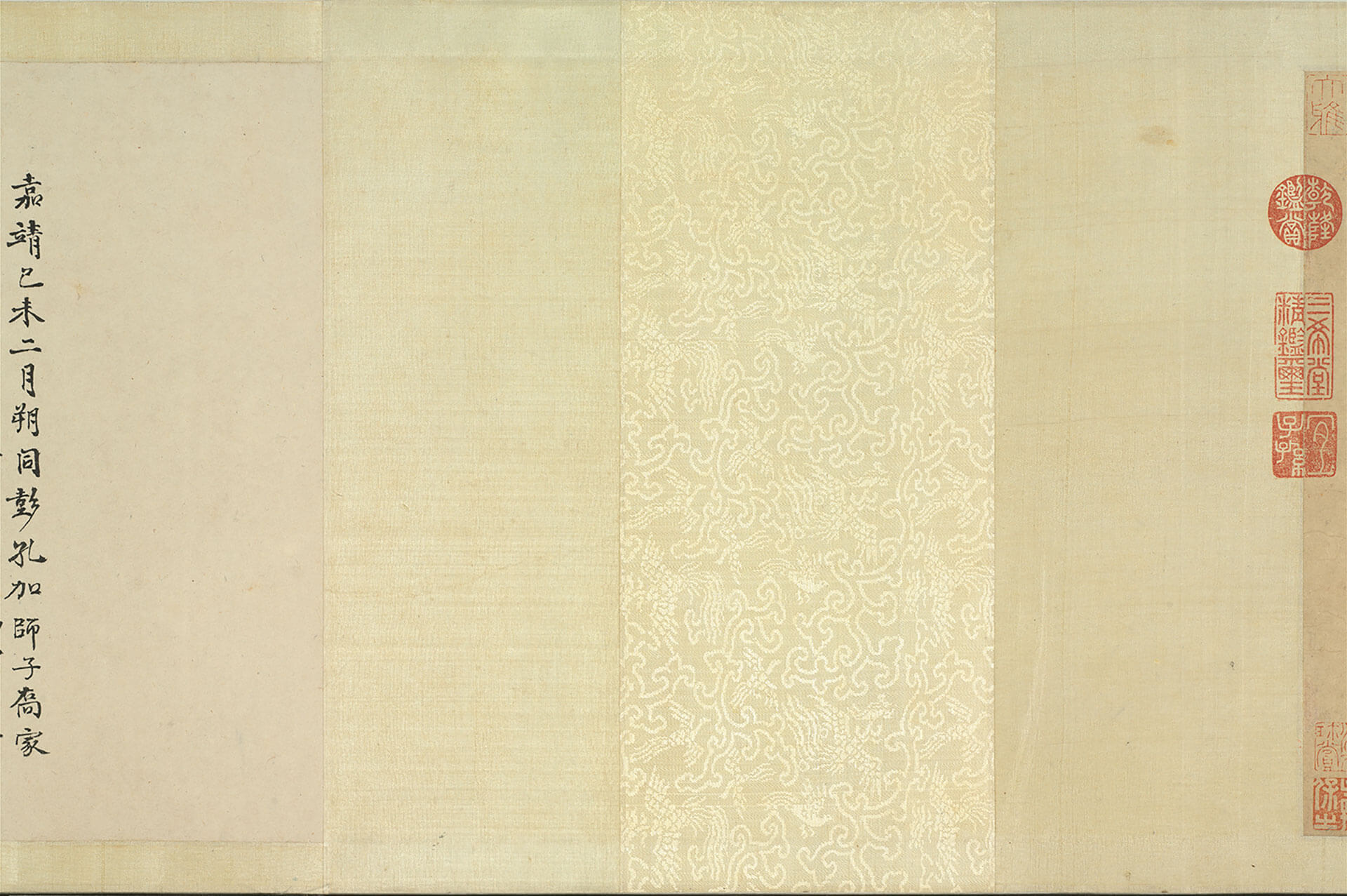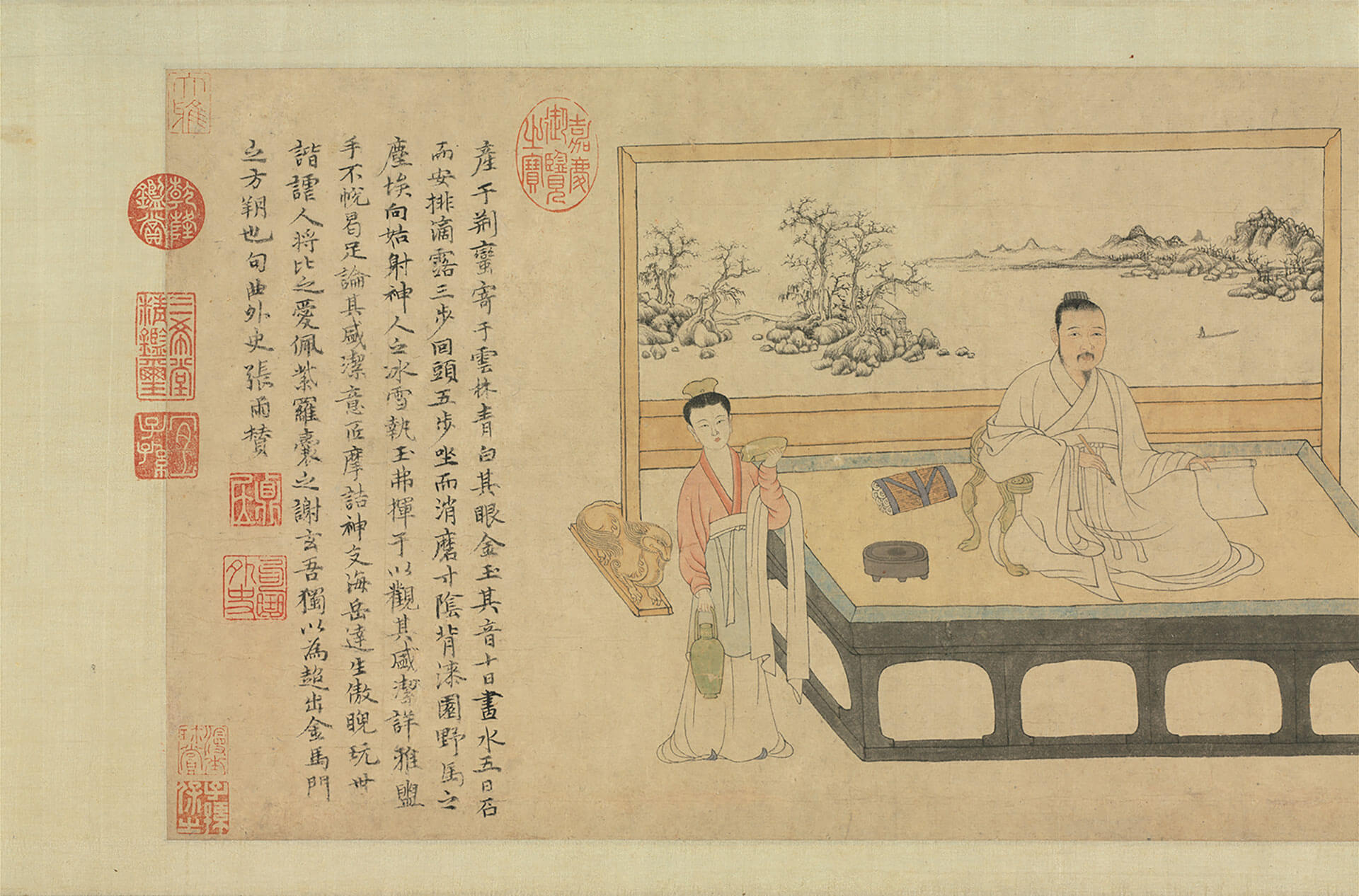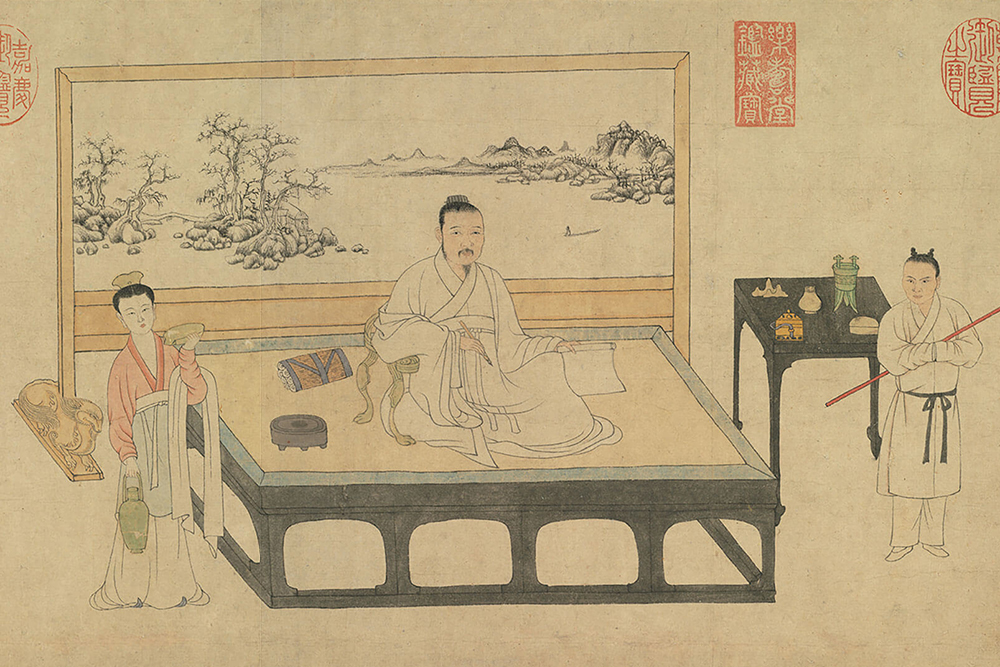Becoming an All-around Scholar of Culture and Authority
A man of great talent by nature, Wang Shizhen with his extraordinary memory was an avid reader since childhood. Having rich cultural assets of his family at his disposal, he was able to stand out among the others. However, after tragedy struck the family, he turned instead to the arts and cultural activities, having Lici ("Evading Thorns") Garden built to retire from the world. Later, he found a more remote place to have Yanshan Garden built and opened for friends to visit, becoming an important stage for social activities. Combined with extraordinary energy, he was able to traverse the various elegant gatherings and cultural activities of his day. Wang Shizhen's antagonism in younger years towards those in power, such as Yan Song and Zhang Juzheng (1525-1582), also helped mold his image as a chivalrous figure. His continued engagement in literary and cultural circles led to friendships with many as well. By employing his wide learning and critical capabilities, he also created a system of art and cultural criticism that gradually made him the focus of attention for many. As a result, his influence quickly spread far and wide across the country. After Li Panlong (1514-1570) passed away, Wang Shizhen assumed leadership of cultural circles for more than two decades, becoming the dominant figure in the world of refined culture during the second half of the sixteenth century.
Portraits of Wu County Literati with Brief Biographies and Laudatory Remarks
- Edited by Gu Yuan (1799-1851), Qing dynasty
- Exhibition time I. 10.5(Wed.)-12.25(Sun.)
Suzhou was a place which boasted rich art and literature, and many famous literati in different generations were natives of Suzhou. However, most of the literatus biographies and paintings compiled over several different dynasties are either lost or incomplete. Thus, bibliophile Gu Yuan (1799-1851) collected 570 portraits of famous literati from ancient and modern times, and commissioned craftsmen to carve these portraits on the stone, which were later embedded into the walls of the newly built Mingxian (which means "famous literati") Temple next to the Canglang Pavilion, which Gu renovated during the reign of the Daoguang Emperor. Afterwards, he further added the biographies of and tributes to these literati, which were altogether engraved and printed into books for circulation. Among the portraits, those of the two brothers Wang Shizhen and Wang Shimao are both done by Kong Jiyao. Their attires and accessories were carefully verified, and the faces are characterized by an amiable smile. In the tribute, Gu complimented Wang Shizhen as "skilled in official affairs" and Wang Shimao as "solemn and respectful," and that the two brothers were "finally able to prove their father's innocence." Such words are indeed a fair historical evaluation and an accurate description of the Wang brothers.
Praising the Yanshan Garden: An Introductory Guidebook
- Shizhen (1526-1590), Ming dynasty
- National Center Library
- Exhibition time I. 10.5(Wed.)-12.25(Sun.)
- Exhibition time II. 12.28(Wed.)-3.21(Tue.)
Wang Shizhen not only led trends the literary world, but also had a deep understanding of garden landscaping and appraisal, leading the trend for literati to build gardens in the Jiangnan area. His Yanshan Garden was also a well-known masterpiece. Wang loved to visit famous gardens in different places, and there are many travel notes on gardens passed down to the current time. To Wang, he believed that those physical gardens would eventually vanish, and these gardens could only "last forever" if someone chose to preserve them with written records.
This book is divided into two volumes, including poems and essays to praise his garden. In the front of the book, part of the garden landscape is presented via four prints. In the preface written by himself, Wang said the compilation of this book could answer many question on his behalf. The book comprises eight garden notes by Wang himself to introduce the garden scenes, and the garden tour routes are presented via images as well, in order to answer common questions of the visitors in the form of a guidebook.
Hanxing inkstone
- Inscribed by Wang Shizhen
- Ming dynasty (1368-1644)
- Exhibition time I. 10.5(Wed.)-12.25(Sun.)
- Exhibition time II. 12.28(Wed.)-3.21(Tue.)
The rectangular inkstone in the chaoshou style has a hollowed base with an angle, which serves the purpose of holding by one hand; this design was the signature of the Song inkstone. The ink pool has a short cylindrical protrusion sitting on the edge of the ink pool with the 'stone's eye' as the centre in a teal colour tinted with yellow; the inclusions are often referred to as the 'xing (star)'. The stone's eyes are the formations of trapped iron within the development of minerals. The Song people valued the presence of the stone's eyes, imagining them as the star and moon resting on the ink pool and granting them with elegant aesthetic. The wall has carved inscriptions in cursive script by Wang Shizhen that read 'Quality as jade, the tenderness giving sensations; Sound as gold, echo bringing harmony. By Shenzhen.' This Ming inkstone copying the Song style demonstrates the admiration of Ming people such as Wang Shizhen for the Song's culture.
Five-Character Poetry in Cursive Script
- Wang Shizhen (1526-1590), Ming dynasty
- Exhibition time II. 12.28(Wed.)-3.21(Tue.)
Few examples of Wang Shizhen's calligraphy on folding fans survive today, this being one of them now mounted as an album leaf. It is a five-character archaic verse that he composed entitled "On a Matter at Lici Garden on an Autumn Day" and recorded in Wang Shizhen's Yanzhou Manuscript in Four Parts. Lici Garden, one of the private gardens that Wang had constructed, was located in Taicang (modern Suzhou City) and built in 1563.
In calligraphy, Wang Shizhen excelled at semi-cursive script and fathomed the depths of Jin and Tang dynasty works. Zhu Mouyin (1584-1628) said that Wang's "brush methods are ancient and elegant." The brushwork throughout this piece is spirited, the gradations of the ink tones rich. The structure of the radical "chuo ⻍" in the character "yao 遙" also relates to ancient draft-cursive script, revealing the origins of and cultivation in Wang's study of calligraphy.
Orchids in Monochrome Ink
- Zhou Tianqiu (1514-1595), Ming dynasty
- Exhibition time I. 10.5(Wed.)-12.25(Sun.)
This scroll was made by painter Zhou Tianqiu of Suzhou (1514-1595) in 1580 for "Yuan Su". The scroll is divided into ten sections with various styles of orchid paintings. In the blank space are over 60 poems penned by famous literati, courtesans, and monks in Suzhou, Huizhou, and Guangzhou, which illustrates the complicated social network in the Jiangnan area back then.
Wang Shizhen appreciated Zhou's calligraphy. In 1580, Zhou copied the Tao Te Ching again at the request of Wang, in exchange for Wang's promise to write a biography for him in the future.
Seven-Character Regulated Verse in Semi-Cursive Script
- Wang Shimao (1536-1588), Ming dynasty
- Exhibition time I. 10.5(Wed.)-12.25(Sun.)
Wang Shimao, the younger brother of Wang Shizhen, had the style name Jingmei and the sobriquet Linzhou. Shimao became a Presented Scholar ("jinshi") in 1559 and served up to the position of Chamberlain of Ceremonials at the capital in Nanjing. The author of Collectanea of Wang Fengchang and Picking and Plucking from the Garden of Art, he also excelled at calligraphy, which his elder brother highly praised as follows: "The 'pool of ink' in my line of the Wang clan, claiming the spot from [Wang] Wuyi and [Wang] Mafen (calligraphers of old), herewith overflows. The fortunate one of high expectations is my younger brother."
This work is a transcription of a seven-character regulated verse entitled, "Paying a Visit to Commandant Wang Boyu at Jiaoshan Leading Disciples in a Meal-Offering Ceremony." The cursive-script method employed is mature and adept, the will and spirit of the calligrapher lofty and soaring. Wang Boyu is another name for Wang Daokun (1525-1593), one of the "Latter Five Masters" of poetry. In 1572, he was chosen as Right Vice Minister of War, hence his title as "Commandant." Testifying to the exchange between the two, it suggests that this folding fan mounted as an album leaf was done after the age of 37.
Portrait of Ni Zan with Wang's Inscription
- Zhang Yu (1277-1348), Yuan dynasty
- National Treasure
- Exhibition time II. 12.28(Wed.)-3.21(Tue.)
This masterpiece depicting the prominent scholar Ni Zan (1301-1374) has an appraisal postscript by Wang Shizhen in 1565. The alongside postscript from the same period indicates that this artwork was in the collection of the renowned Suzhou literati, Chang Fengyi (1550-1636). When Wang Shizhen's father deceased, the Wang brothers travelled back to Suzhou to mourn. Until they had served the mourning in 1564, the Wangs began to join literati gatherings more constantly and befriended various talents. The postscripts at the end of the scroll manifest that the connoisseurship of the artwork was a collaborative activity in Suzhou at that period.
